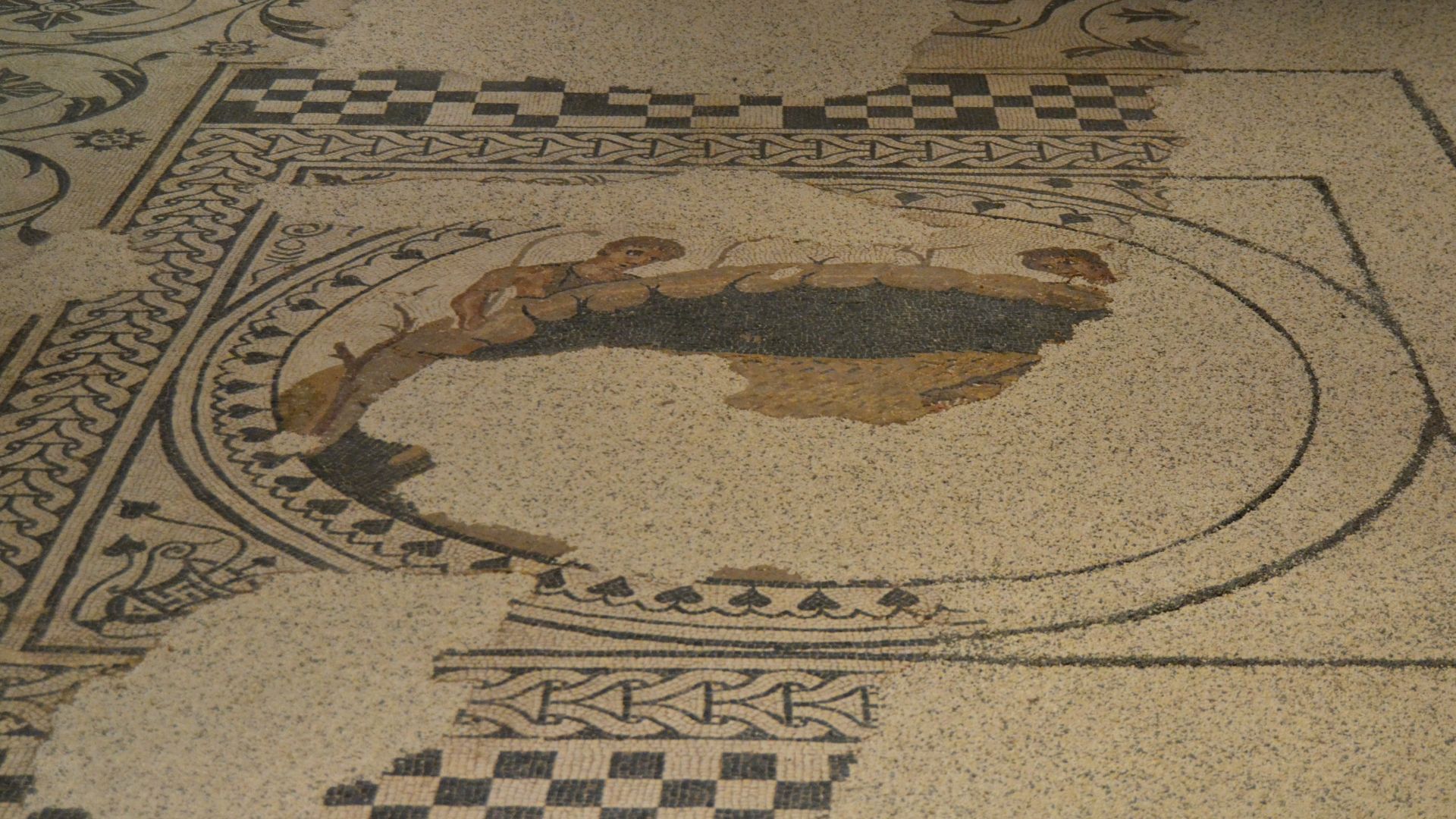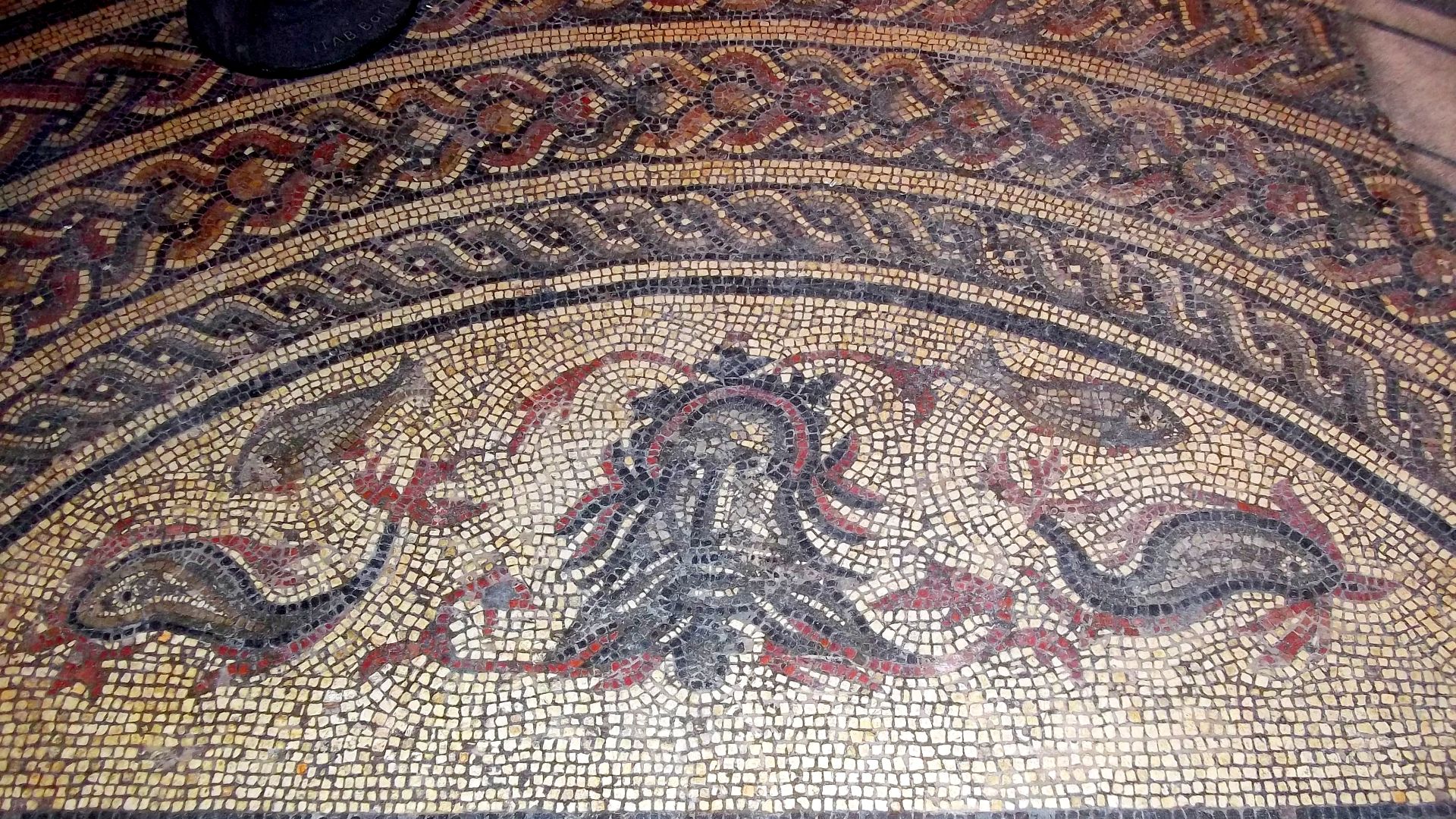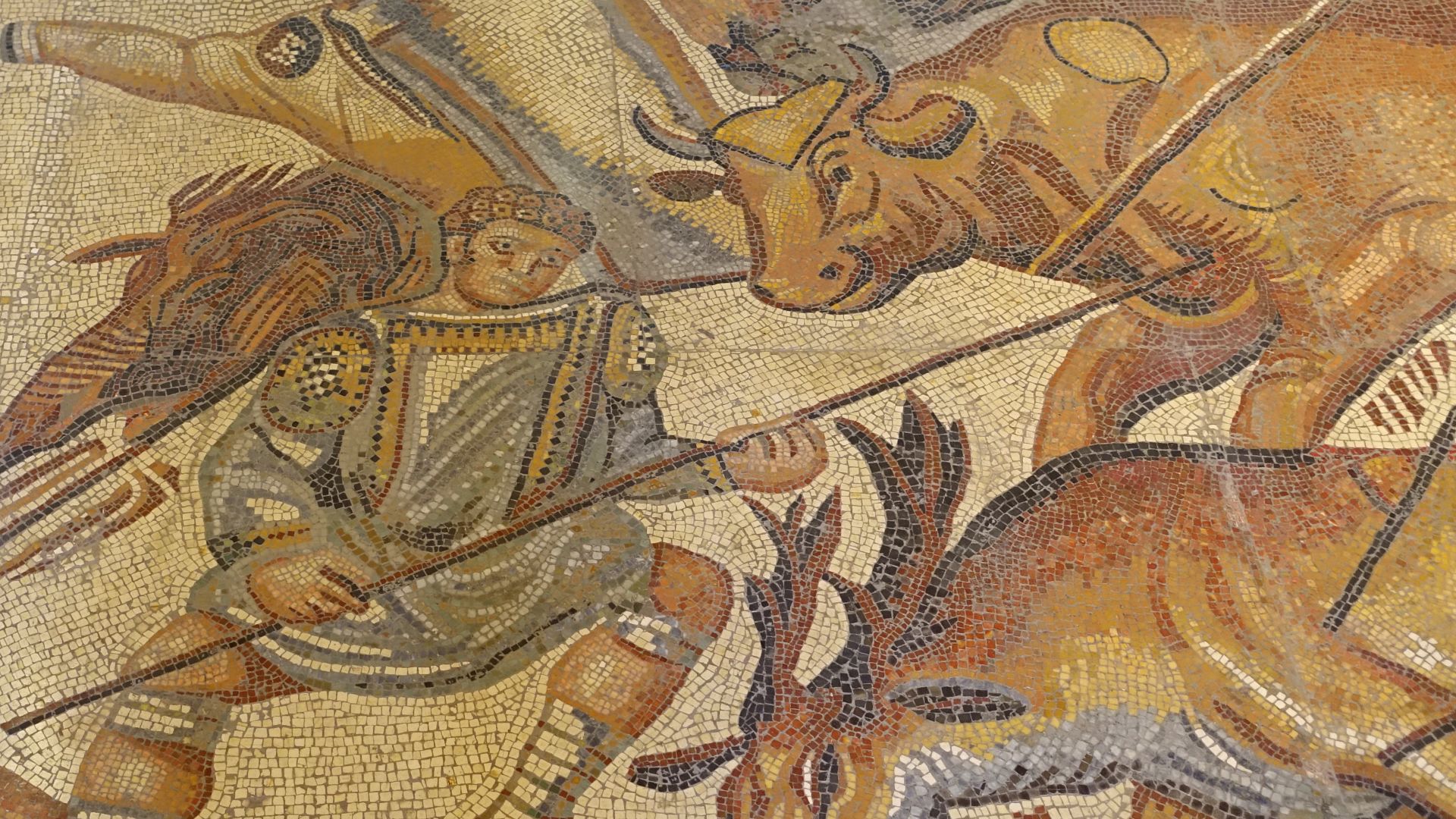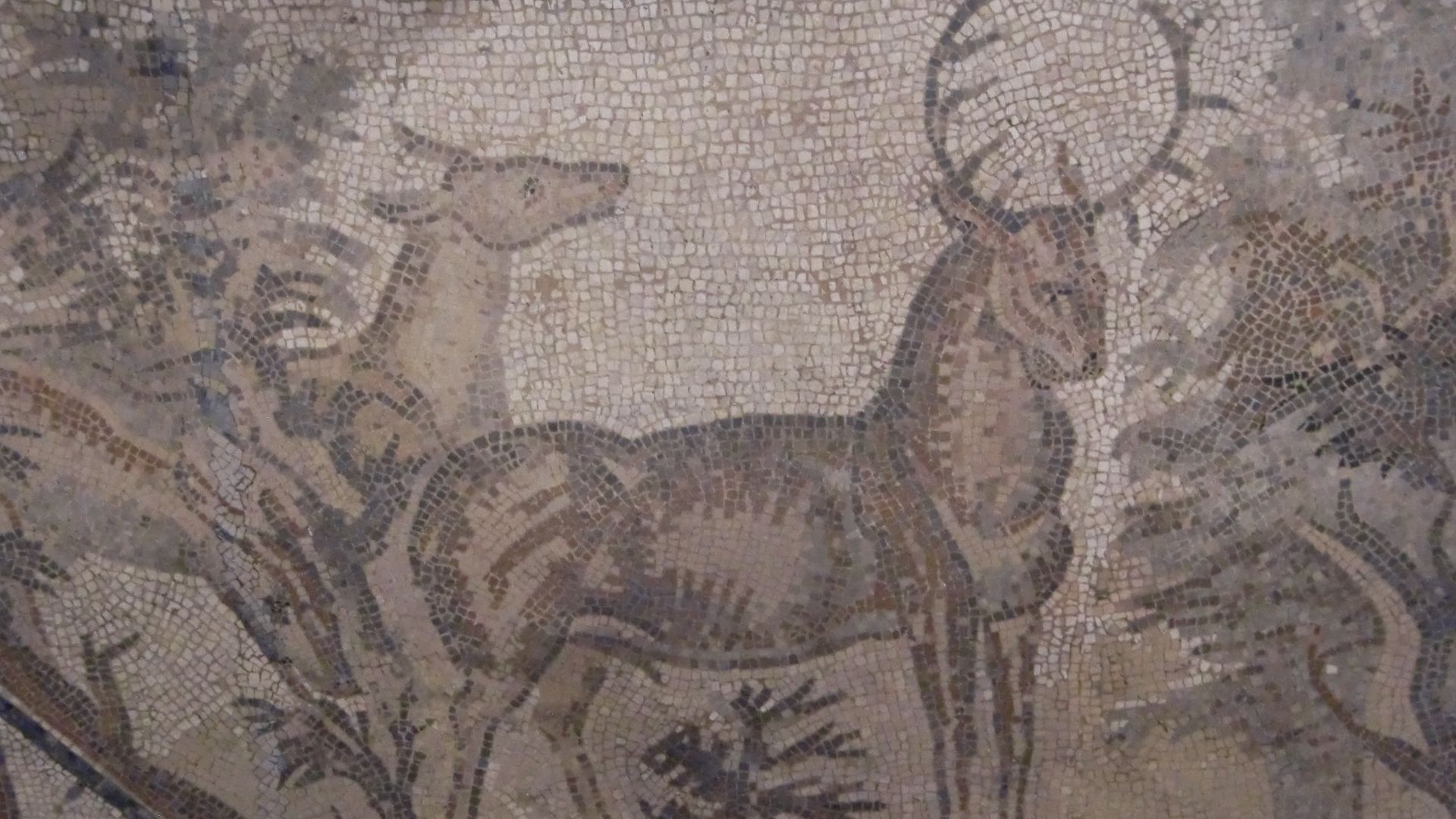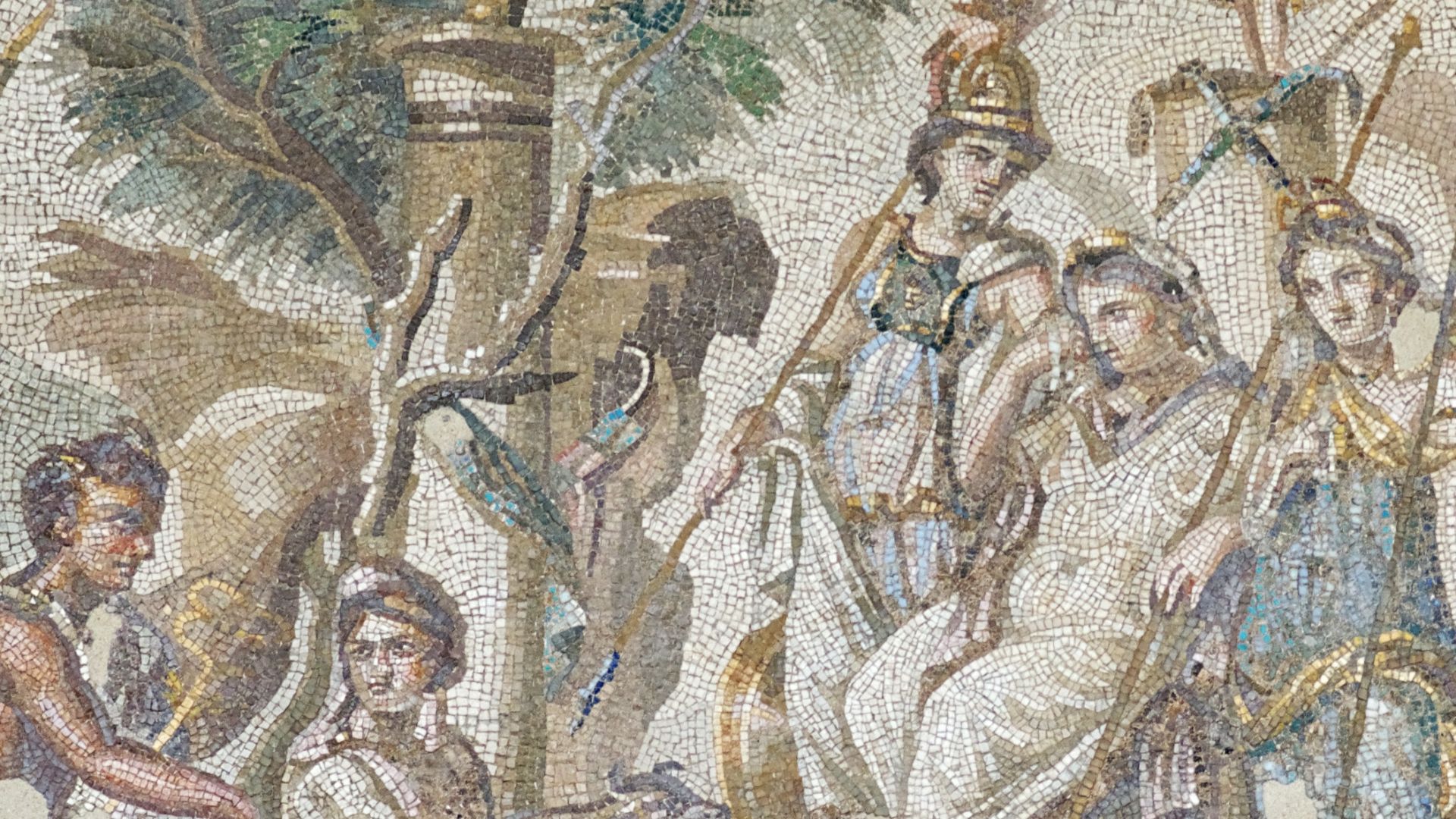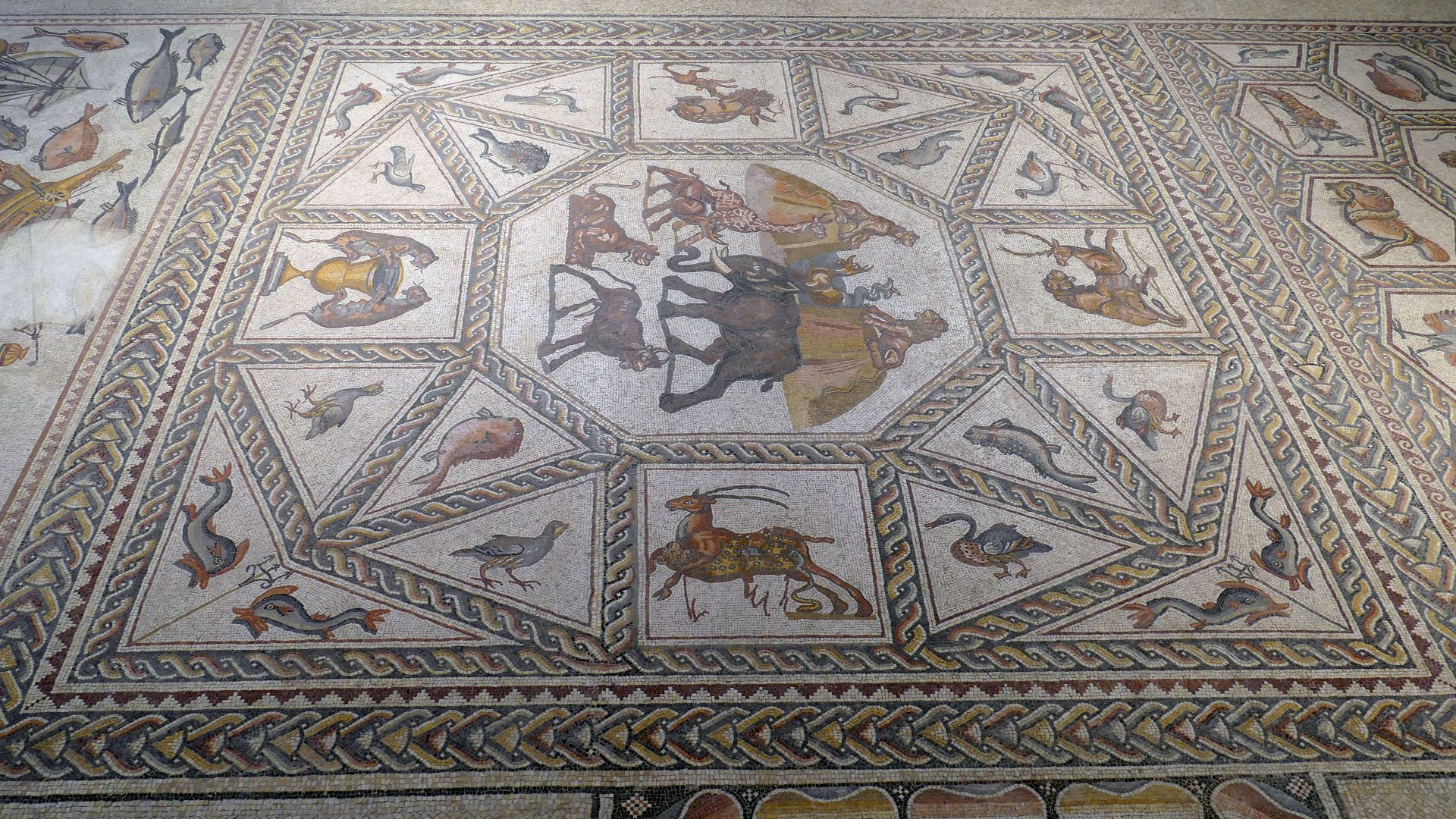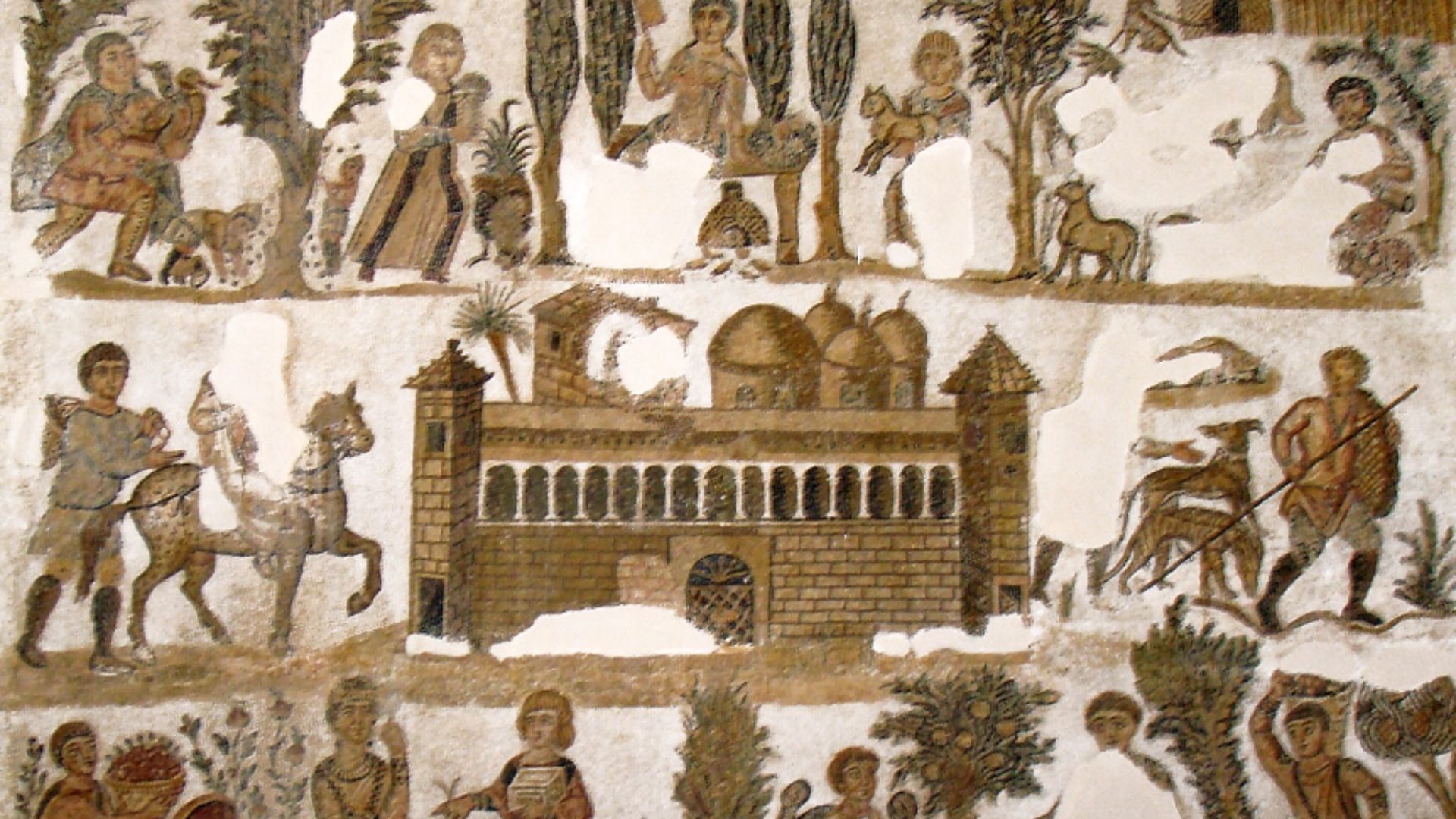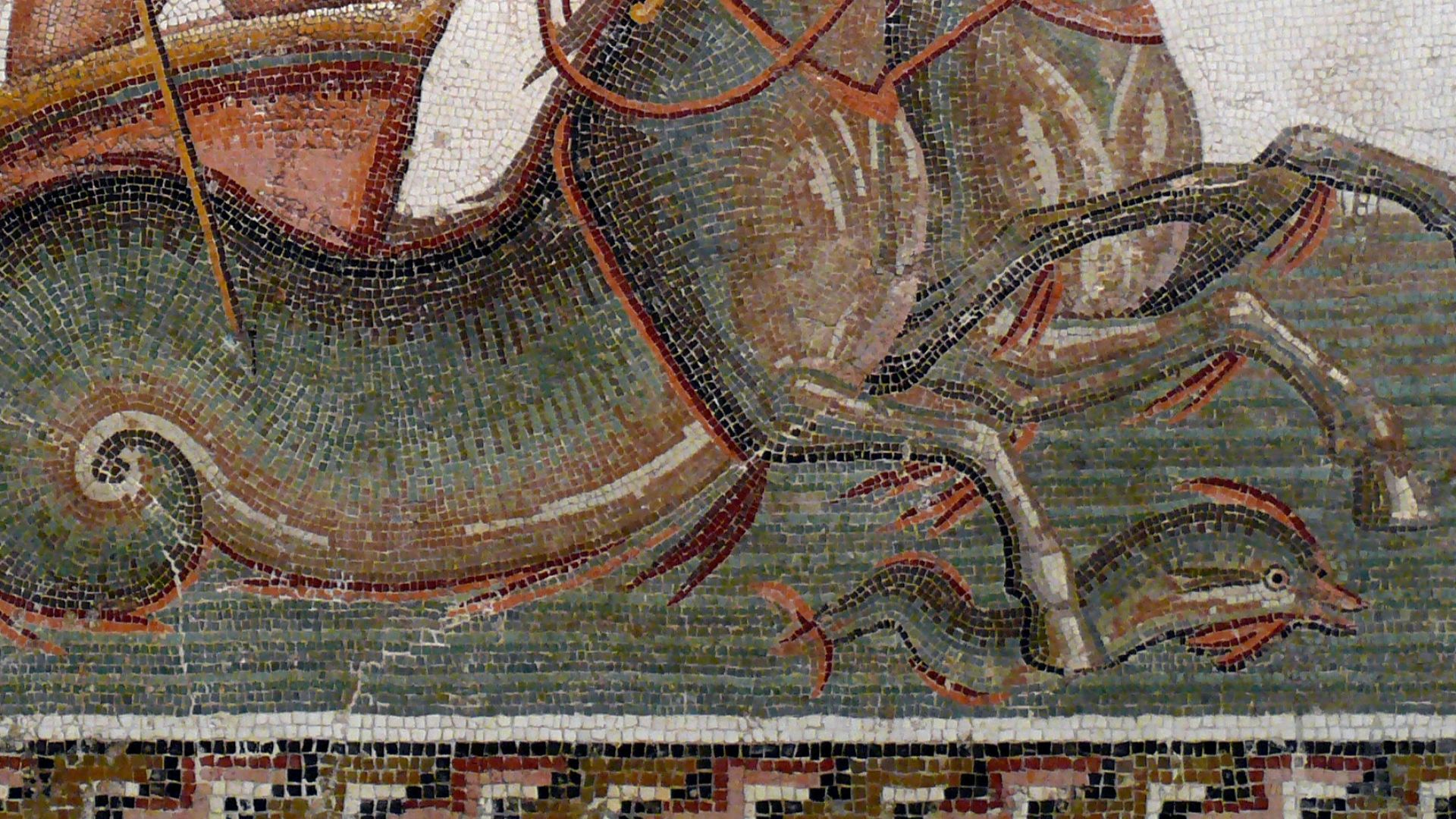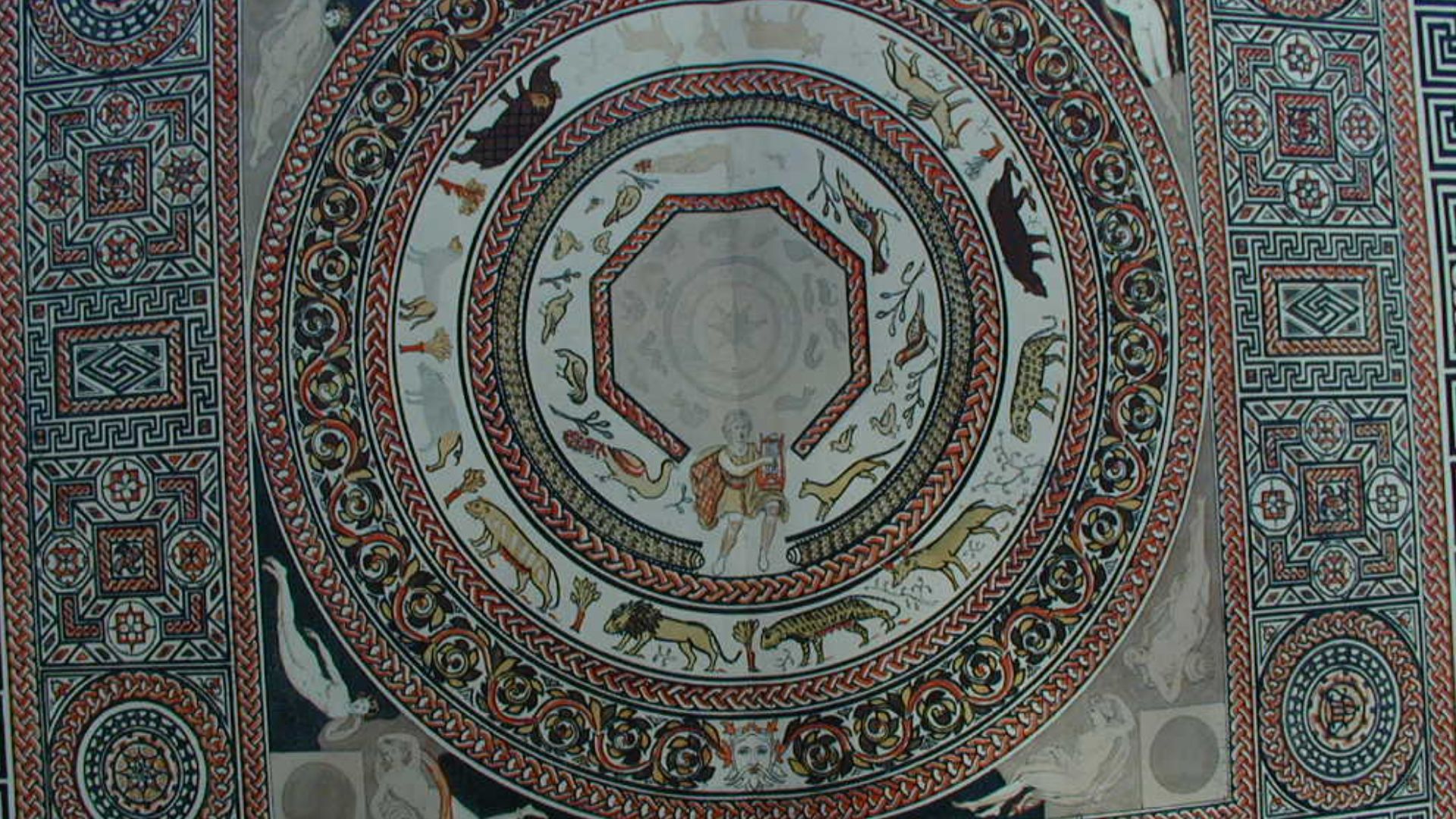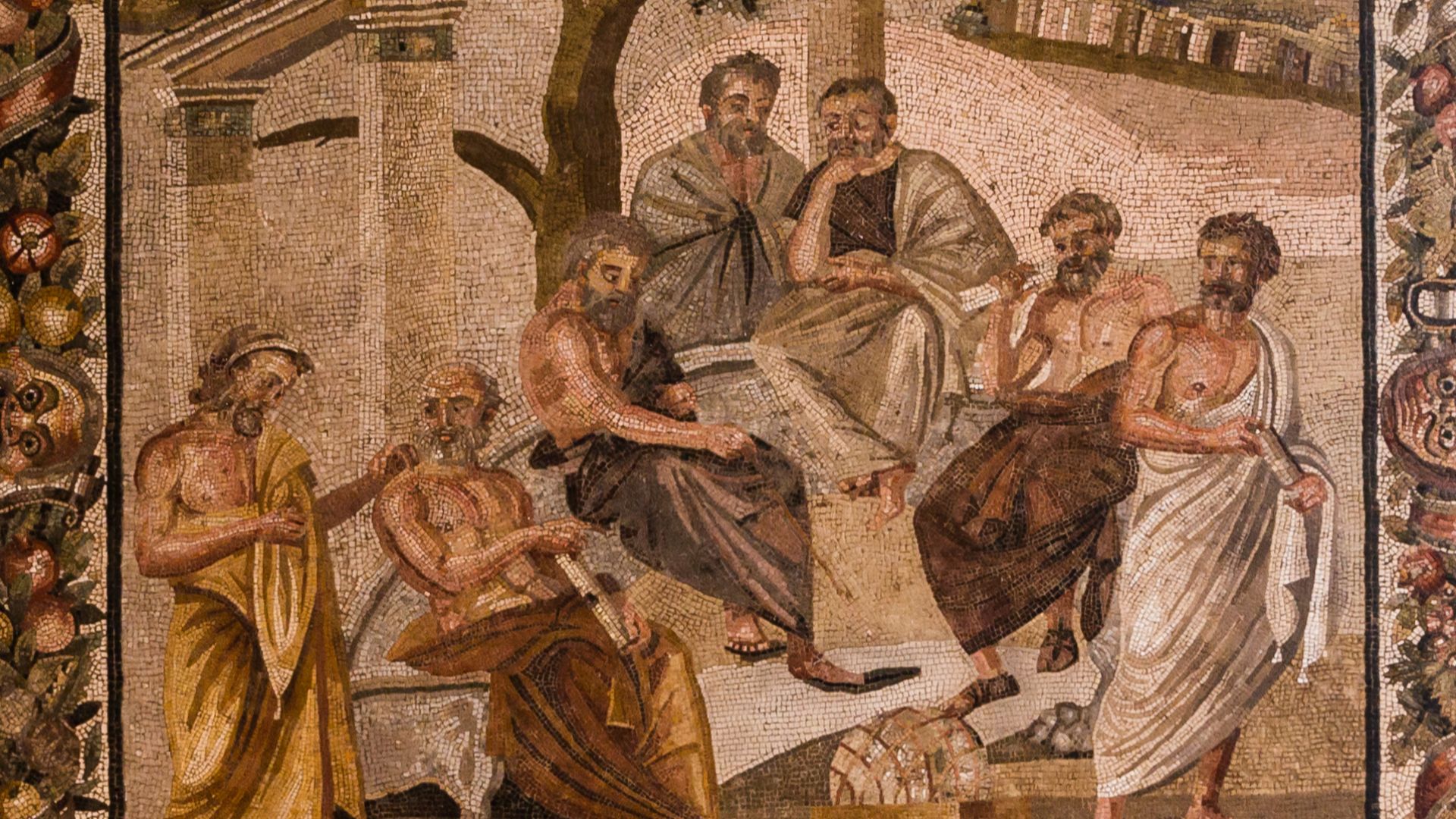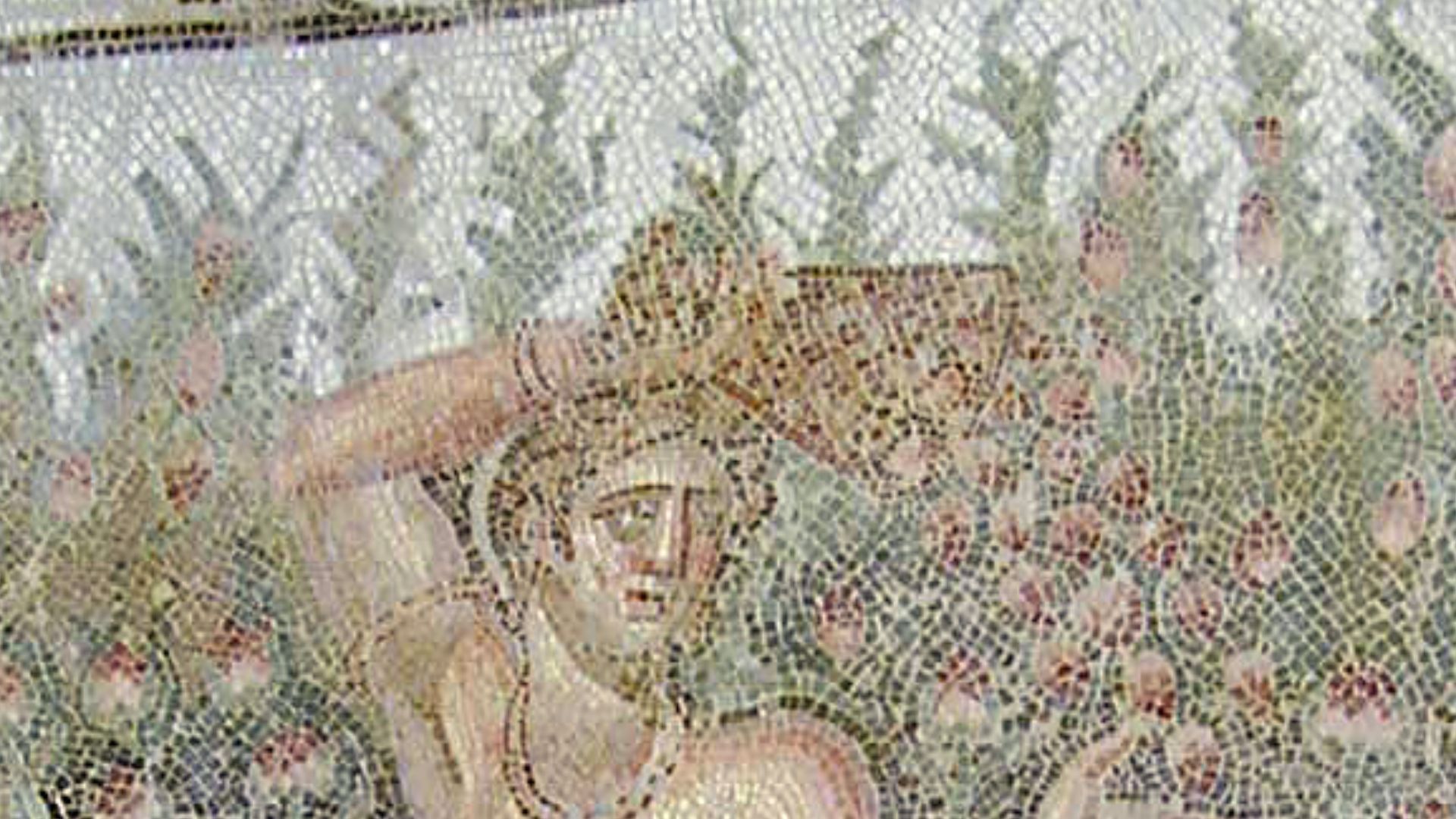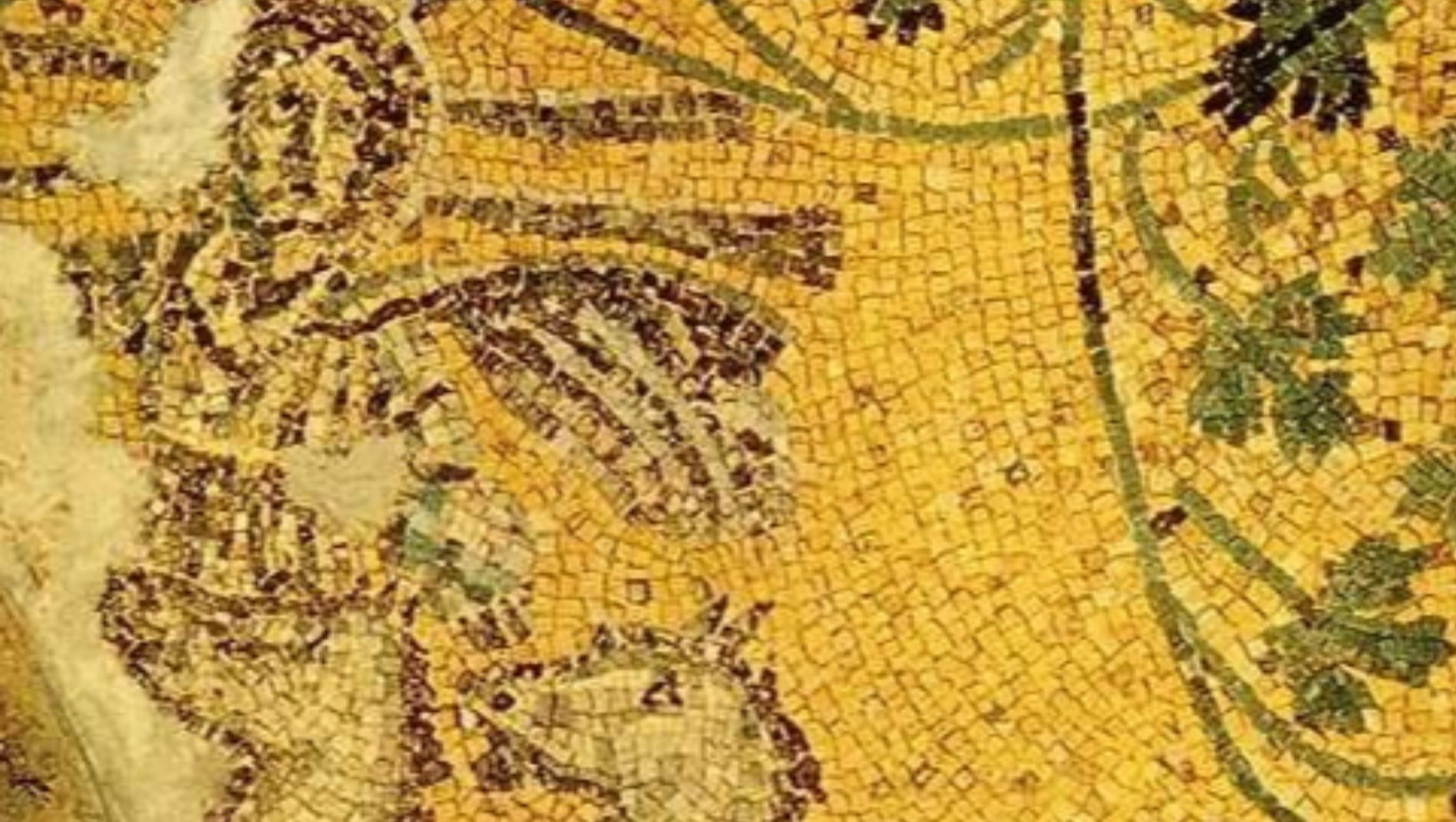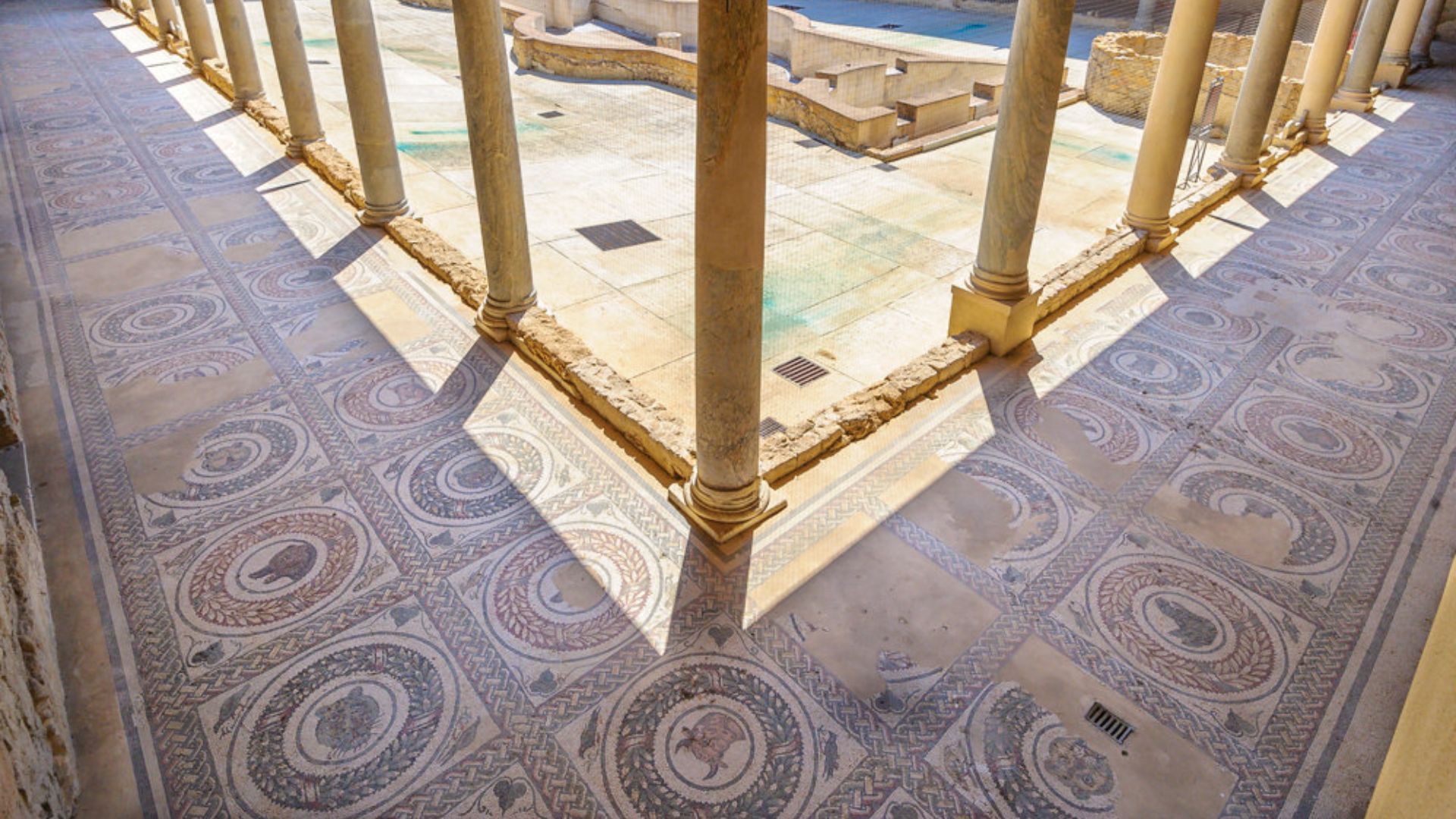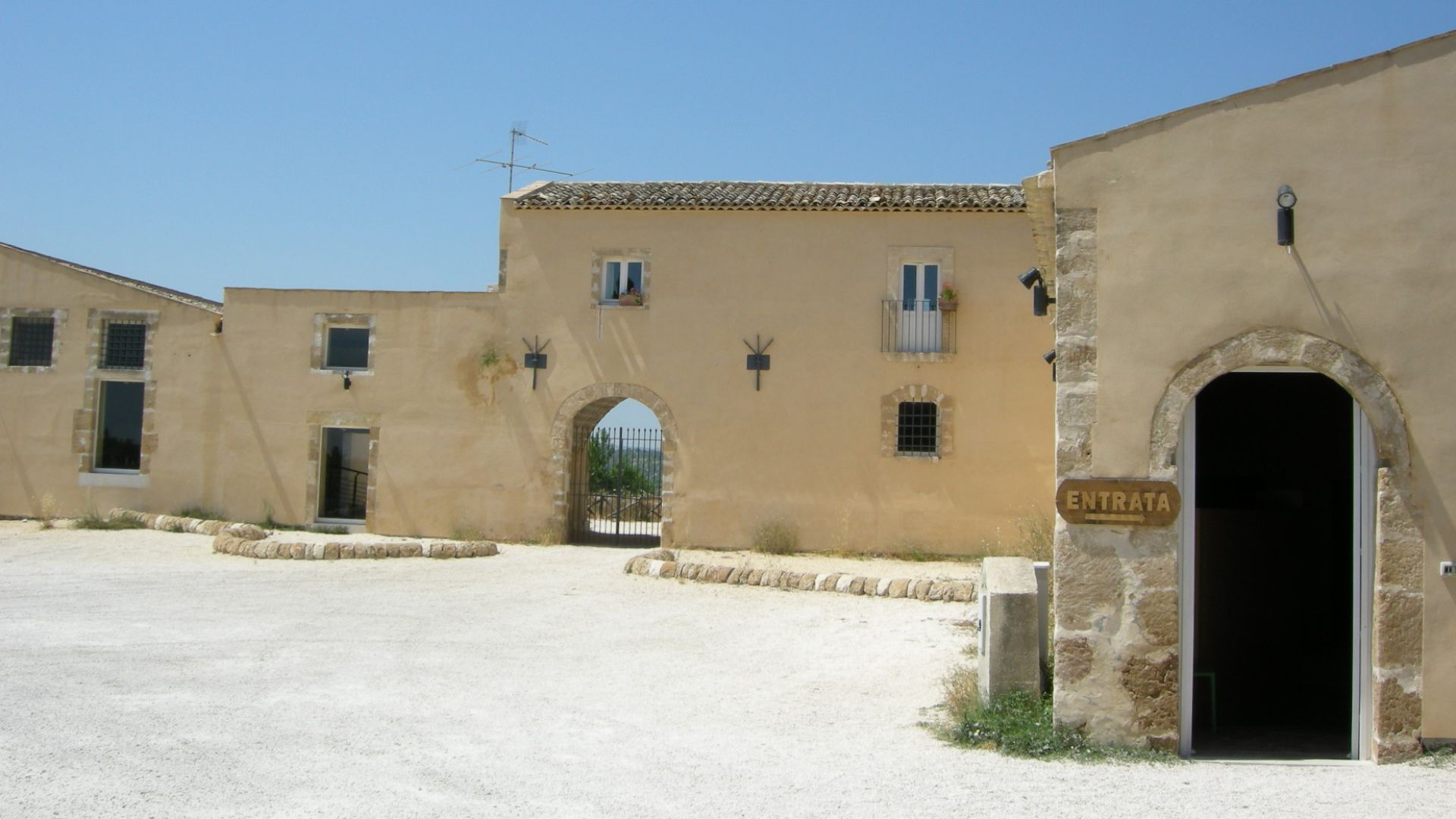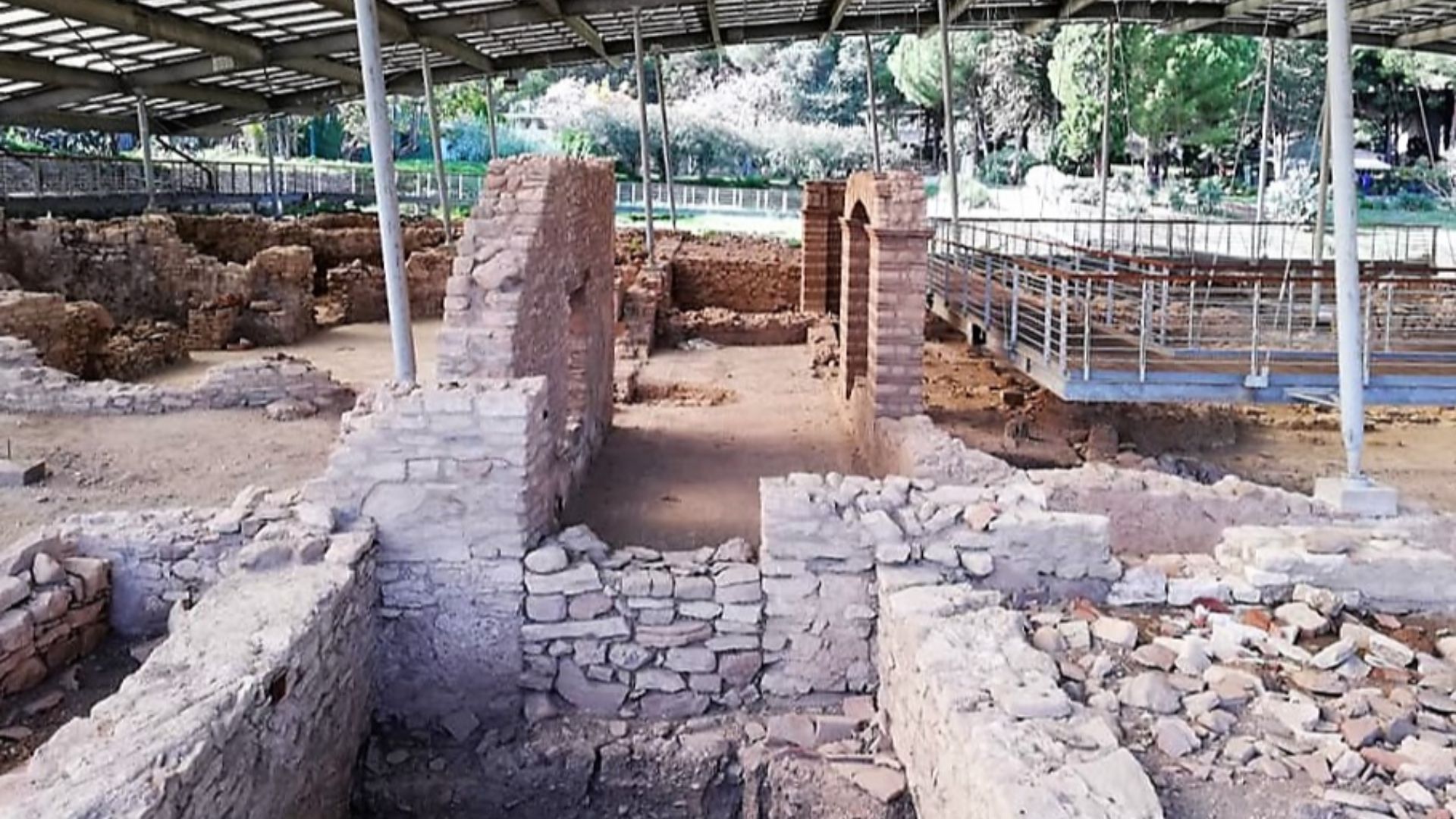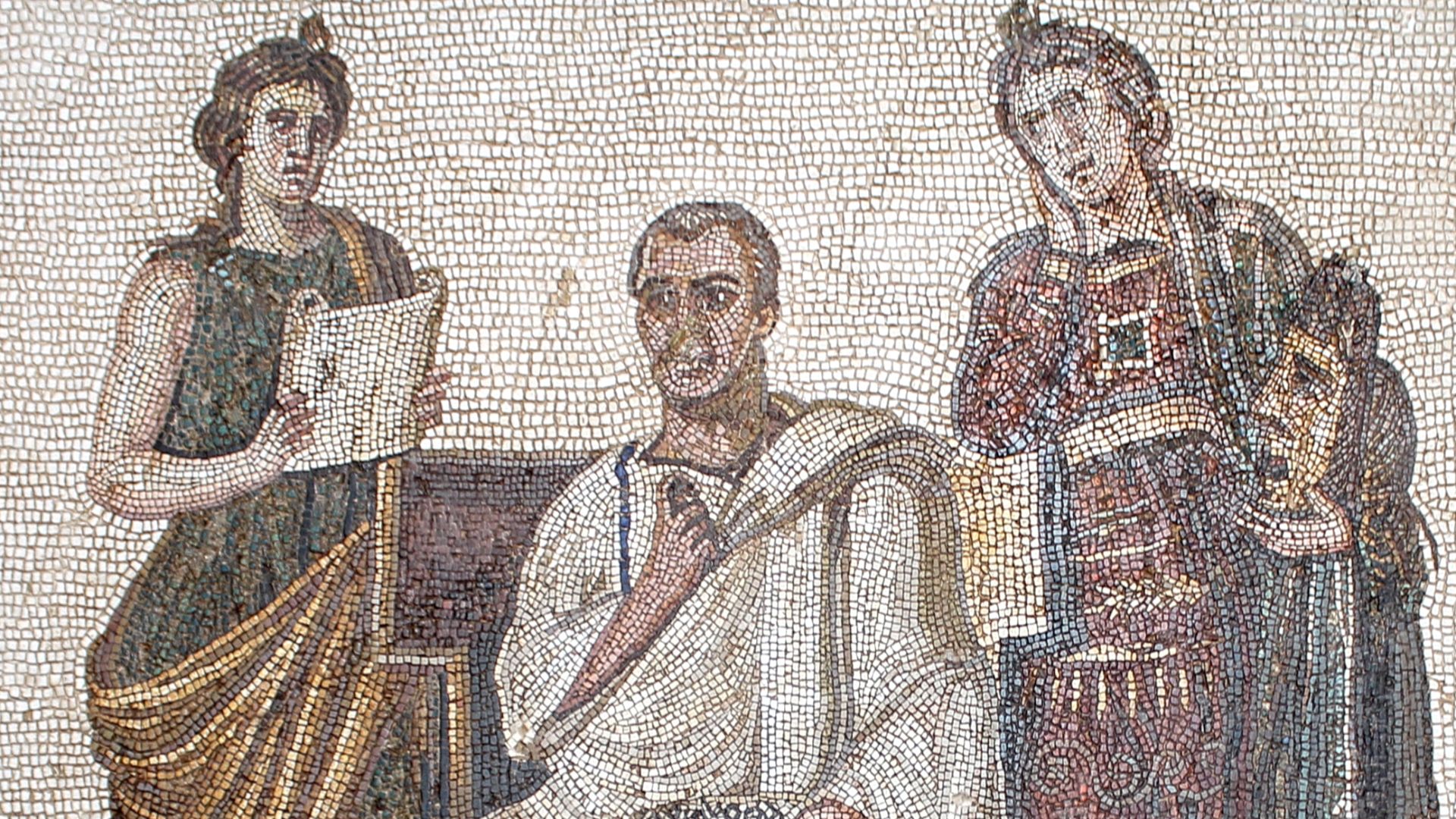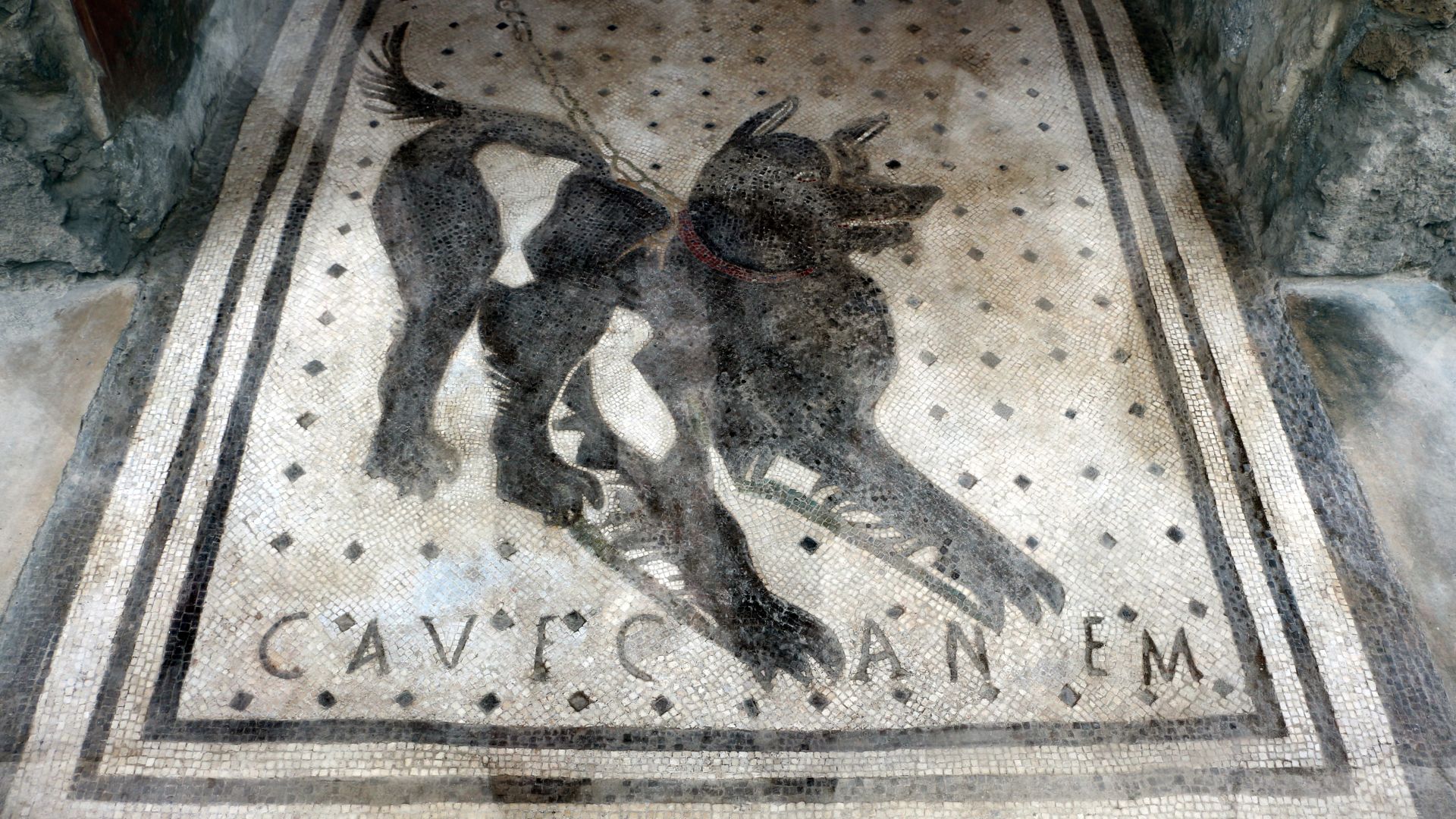The Most Dazzling Roman Mosaics Ever Recovered
Ancient Romans were masters of the mosaic. They were the first to use tiny colored cubes of stone, ceramic, or glass (tesserae) to create intricate artistic designs, most of which were meant to be walked on. Many of these art pieces have survived and remain breathtakingly beautiful despite centuries of use and neglect.
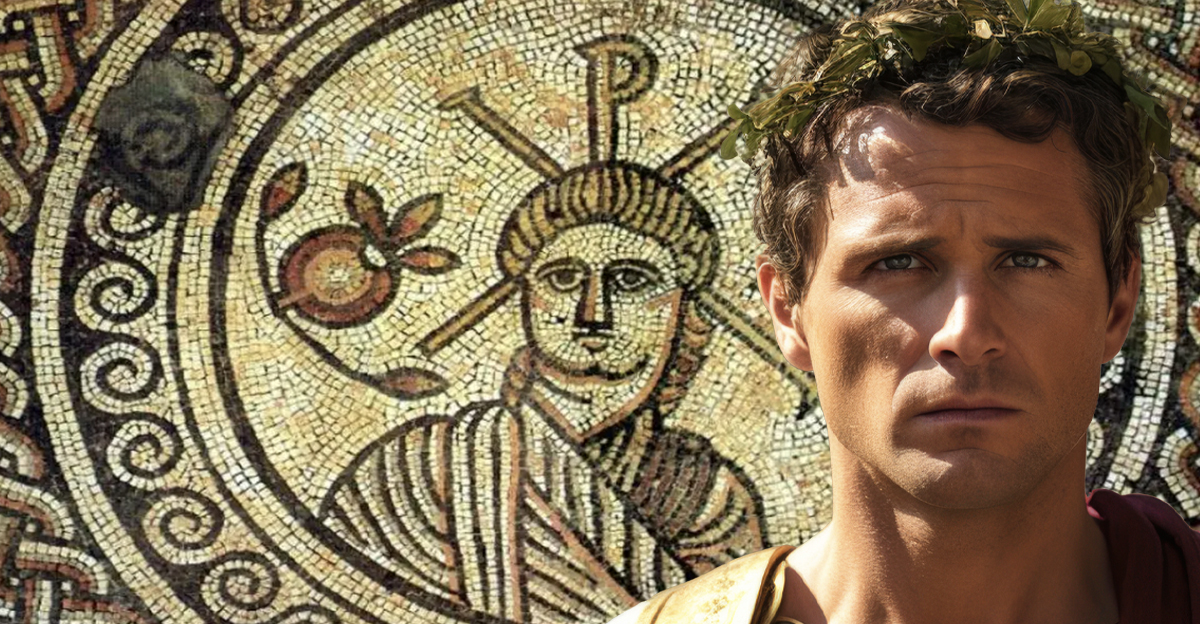
Alexander Mosaic
The Alexander Mosaic depicts a battle between the armies of Alexander the Great and Darius III of Persia. Created in the 2nd century BCE, the large floor mosaic is composed of about 1.5 million tiny tiles. Preserved by a layer of ash from the volcanic eruption of Mount Vesuvius, the mosaic is in good condition and is held at the Naples National Archaeological Museum.
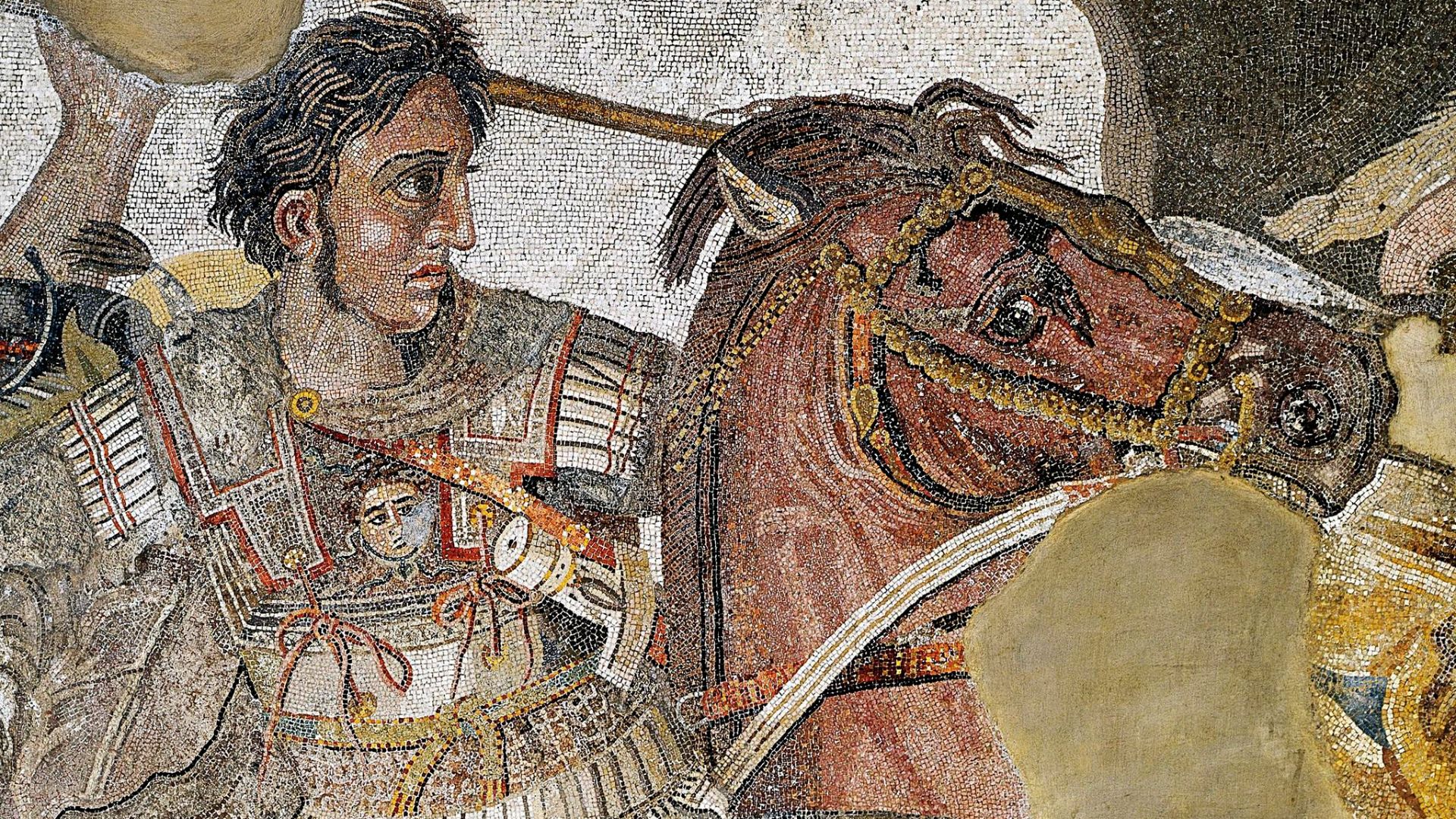 Unknown authorUnknown author, Wikimedia Commons
Unknown authorUnknown author, Wikimedia Commons
Antioch Mosaics
Created in the 3rd century CE, the Antioch mosaics were discovered between 1932 and 1939 in modern-day Turkey. The floor mosaics—there are over 300 of them—include intricate designs of realistic imagery and geometric patterns. About half remain in Turkey, at the Hatay Archaeological Museum; the others reside at museums around the world.
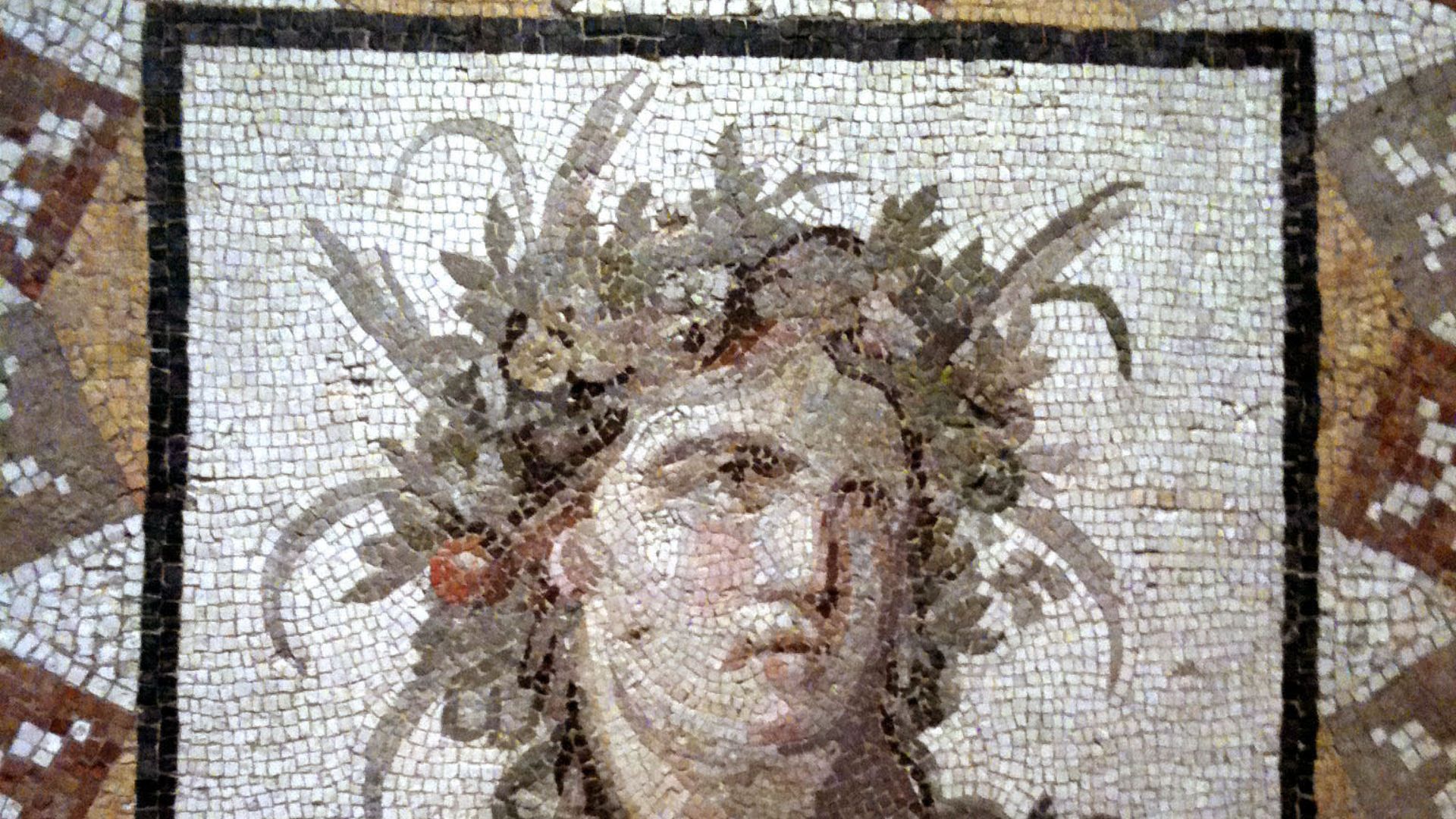 Jorge Elías, Wikimedia Commons
Jorge Elías, Wikimedia Commons
Bellerophon Mosaic
The stunning Bellerophon Mosaic, created in the 2nd century CE, was discovered in Autun, France, in 1803. Depicting a scene from Greek mythology, it is a large, circular floor mosaic that was likely installed at an aristocratic residence. It is currently housed in the Musée Rolin at Autun.
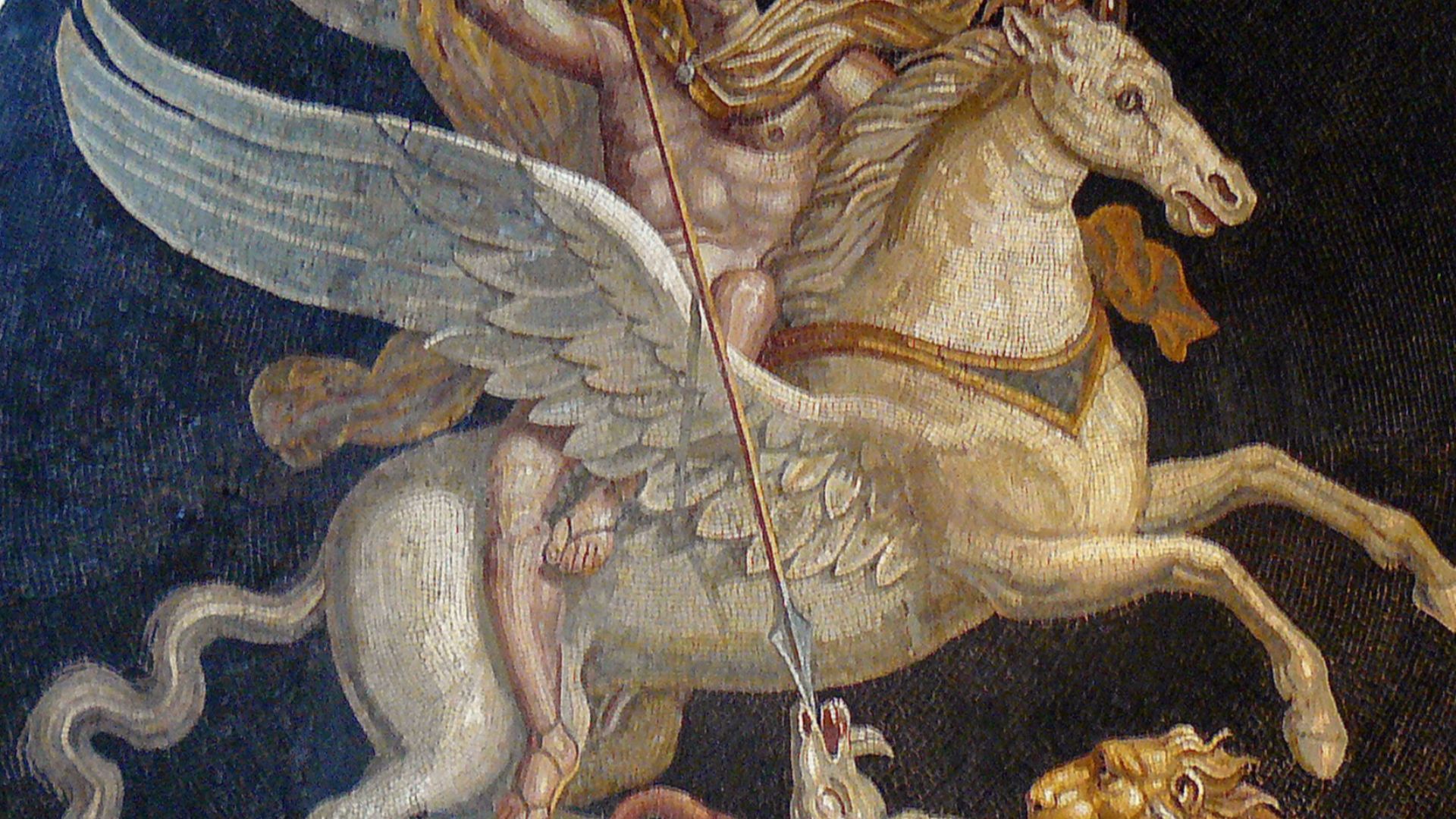 Felix Potuit, Wikimedia Commons
Felix Potuit, Wikimedia Commons
Boxford Roman Mosaic
In 2017, a large mosaic—over six meters (20 feet) long—was uncovered at an archaeological dig site in Boxford, West Berkshire, England. Although it has some damage, this 4th-century CE mosaic features some of the most famous heroes of Greek mythology, including Hercules, a centaur, Chimera, and Pegasus.
Carthage Circus Mosaic
The Carthage Circus Mosaic, created in the 1st or 2nd century CE, is a unique depiction of both a circus building and the activity within it. The scene is one of a horse and chariot race, with victory in sight for the Les Bleus team. The mosaic is housed in the Bardo National Museum in Tunisia, near the place of its discovery.
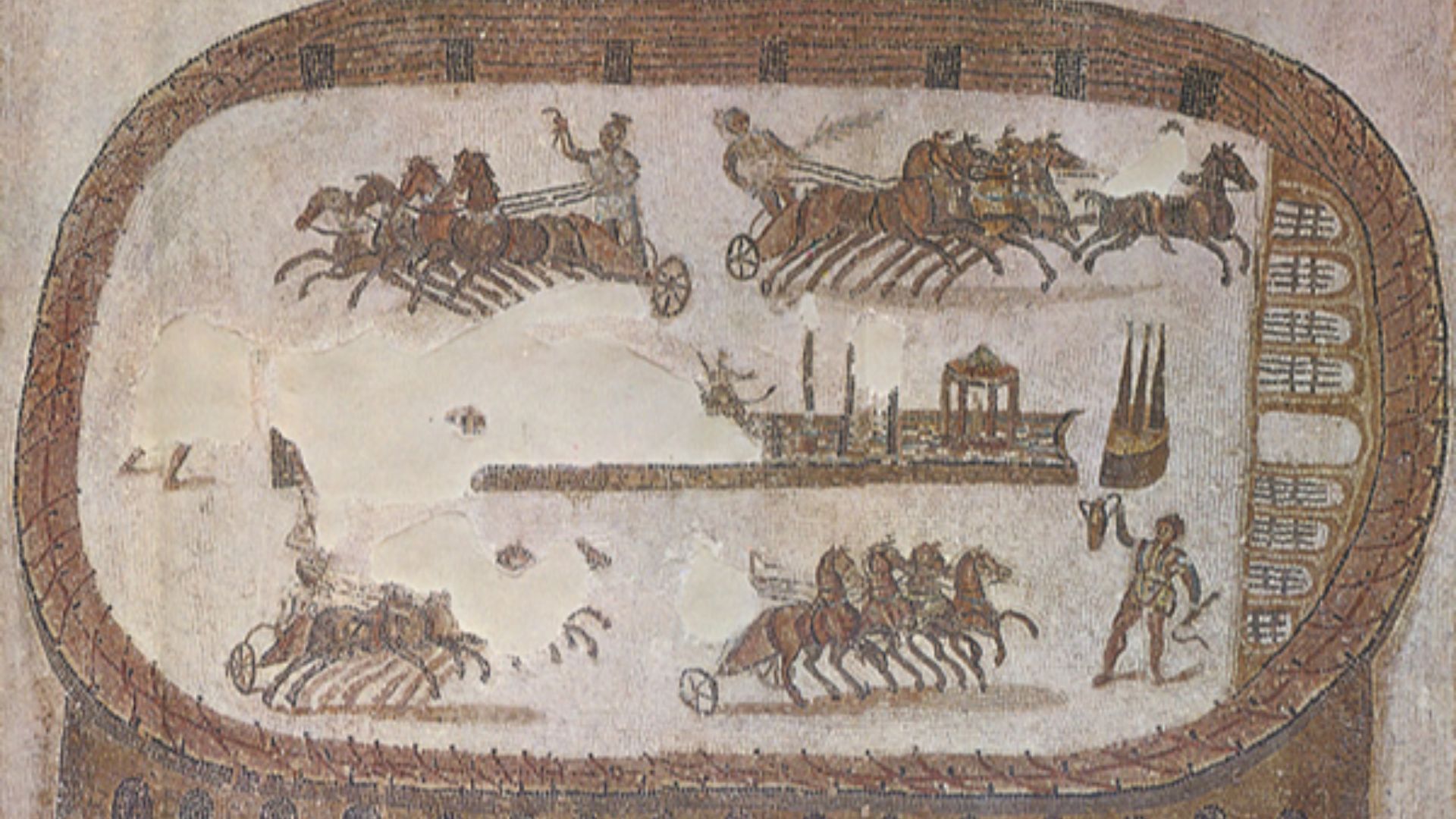 University of Chicago, Wikimedia Commons
University of Chicago, Wikimedia Commons
Circus Games Mosaic
The Circus Games Mosaic was discovered in Lyon, France, in 1806, as workers were digging to build a reservoir. The 2nd-century CE mosaic sustained very little damage over the centuries. Bordered with geometric shapes and foliage, the main scene depicts a chariot race. It is on display at the Gallo-Roman Museum of Lyon.
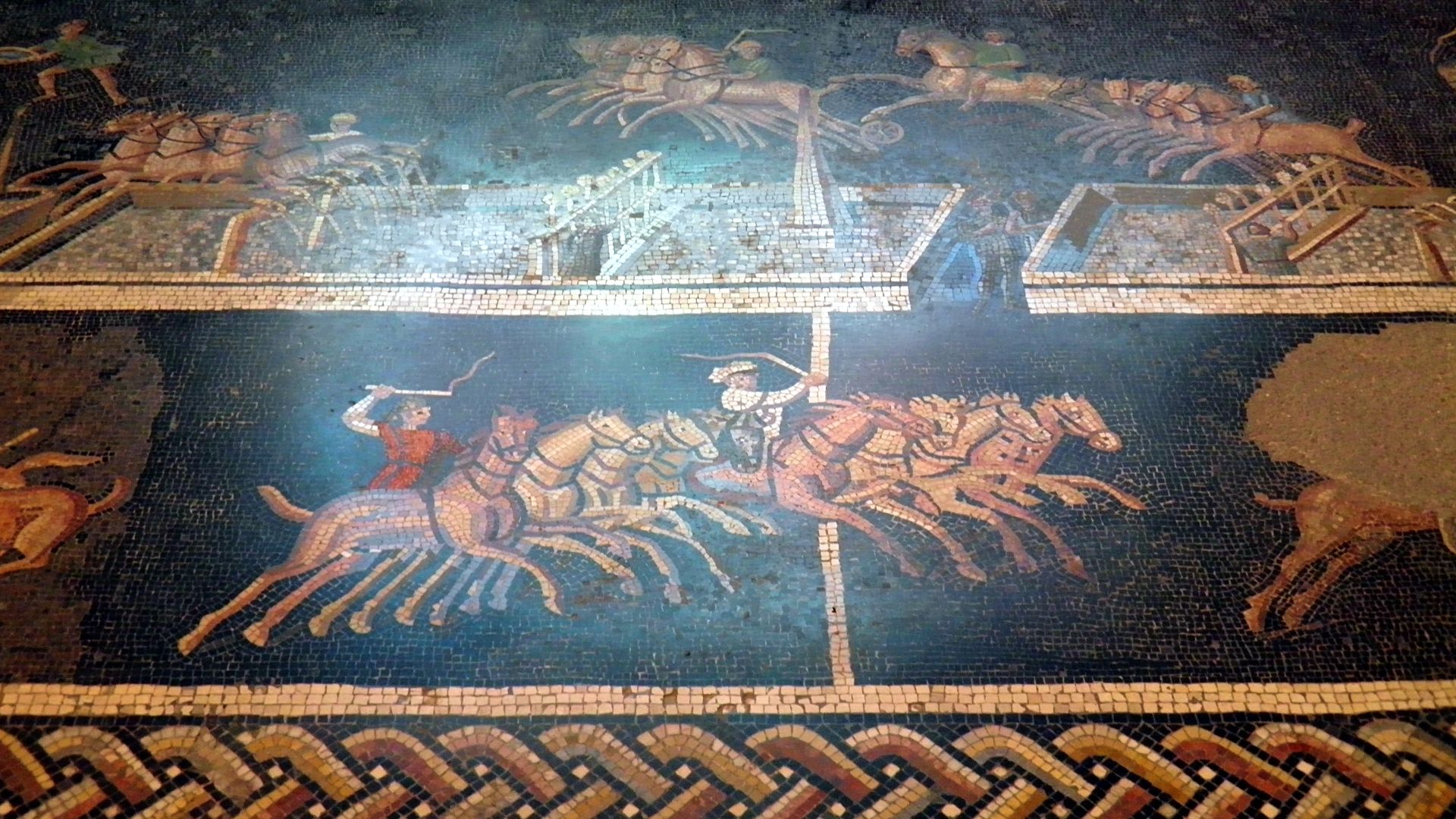 Carole Raddato from FRANKFURT, Germany, Wikimedia Commons
Carole Raddato from FRANKFURT, Germany, Wikimedia Commons
Domus Eirene
The Domus Eirene (“House of Eirene”) was discovered in 1983-1984, while construction was underway in Plovdiv, Bulgaria. The structure was built in the 3rd century CE and features lavish mosaic floors. The remains of the house—including the floors—have been restored and can be viewed in situ.
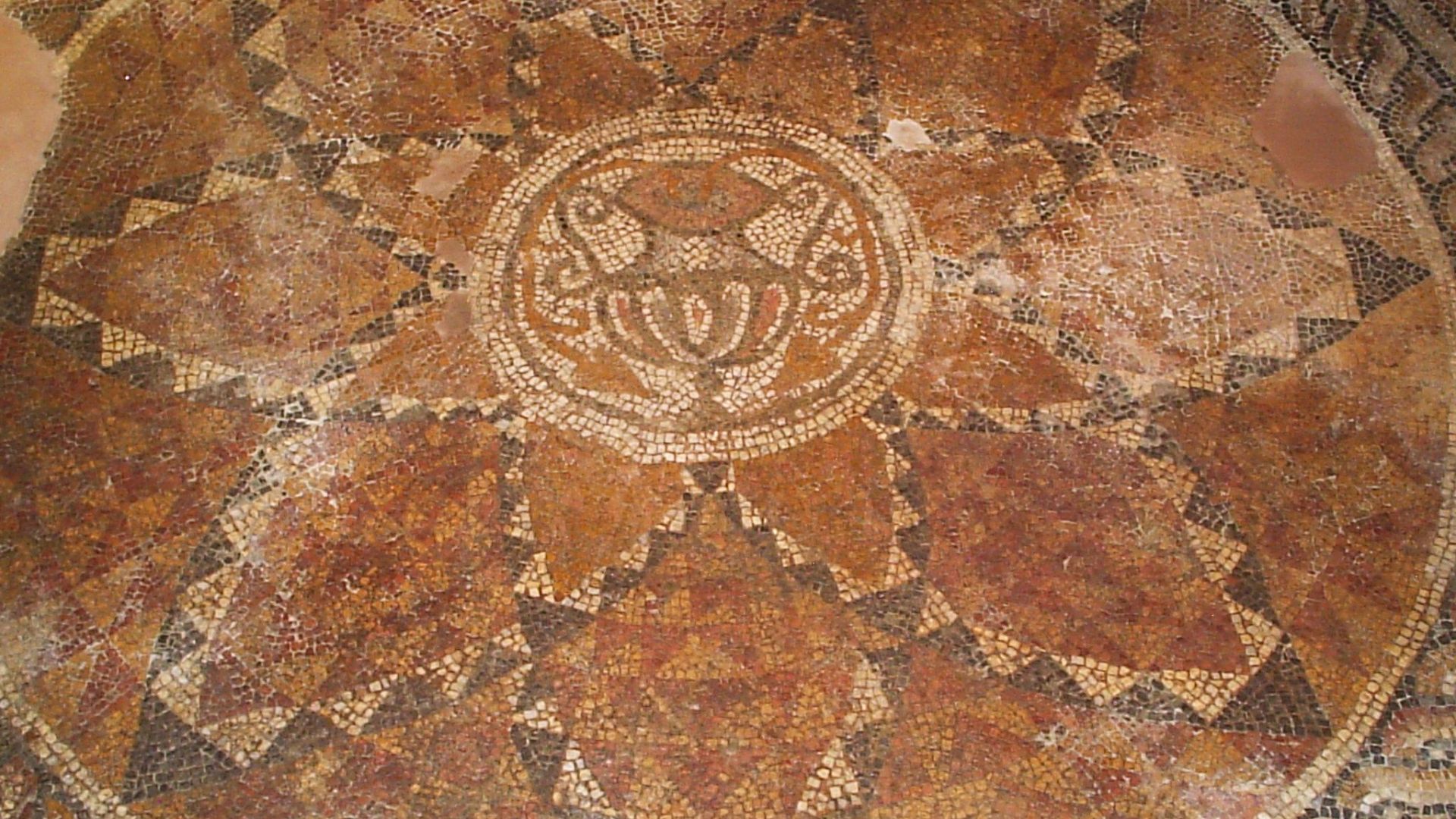 Realsteel007, Wikimedia Commons
Realsteel007, Wikimedia Commons
Mosaic De Font De Mussa
Discovered in Benifaió, Spain, the Mosaic de Font de Mussa was created in the 1st or 2nd century CE. The mosaic's center depicts the shepherd Faustulus in front of the cave where Romulus and Remus, the twin founders of Rome, were raised by a she-wolf. Borders with plant and geometric motifs surround the central image.
Fordington Mosaic
The Fordington Mosaic was created in the 2nd century CE. It's a stunning, colorful floor mosaic. Although it sustained some damage, it beautifully depicts Oceanus and sea life in bold color. Discovered in 1903 in Fordington, Dorchester, England, it was excavated in 1927 with the help of Thomas Hardy, the great English novelist and poet.
Gladiator Mosaic
The Gladiator Mosaic isn't a single mosaic but a stunning and highly-detailed set of five large and two smaller mosaics. Together, the panels tell one story that centers around a celebratory event featuring gladiators. Dated to the 4th century CE, the panels were discovered in 1834 outside Rome. They were excavated in 1839 and are now installed in the Salone of the Galleria Borghese in Rome.
Mosaic Of Lillebonne
One of the most impressive floor mosaics discovered in France, the Mosaic of Lillebonne depicts deer in an autumnal forest landscape. It was discovered in 1870 in Lillebonne when a worker was digging to prepare a garden. The piece was created in the 2nd or 4th century CE.
Judgment Of Paris Mosaic
The Judgment of Paris has been the subject of several works of art, including a breathtaking 2nd-century mosaic discovered in present-day Turkey. The large floor mosaic—one of a set depicting mythological Greek figures—features Paris, a prince of Troy, as he chooses the most beautiful goddess from the group of Hera, Athena, and Aphrodite. The artwork is held at the Louvre.
Lod Mosaic
Discovered in Lod, Israel in 1996, when construction workers were widening a street, the Lod mosaic is dated to circa 300 CE. One of the largest and best-preserved mosaics discovered in Israel, the stunning artwork depicts ships, birds, fish, and animals including rhinoceroses and giraffes, which are not common in Roman art.
Lopen Roman Mosaic
The Lopen Roman mosaic was discovered in 2001 during the construction of a new access road in Lopen, Somerset, England. The find uncovered an eight-room villa with two floor mosaics. The larger piece features a complicated geometric design as well as elements like leaves, cups, and dolphins. It is now displayed in All Saints Church in Lopen.
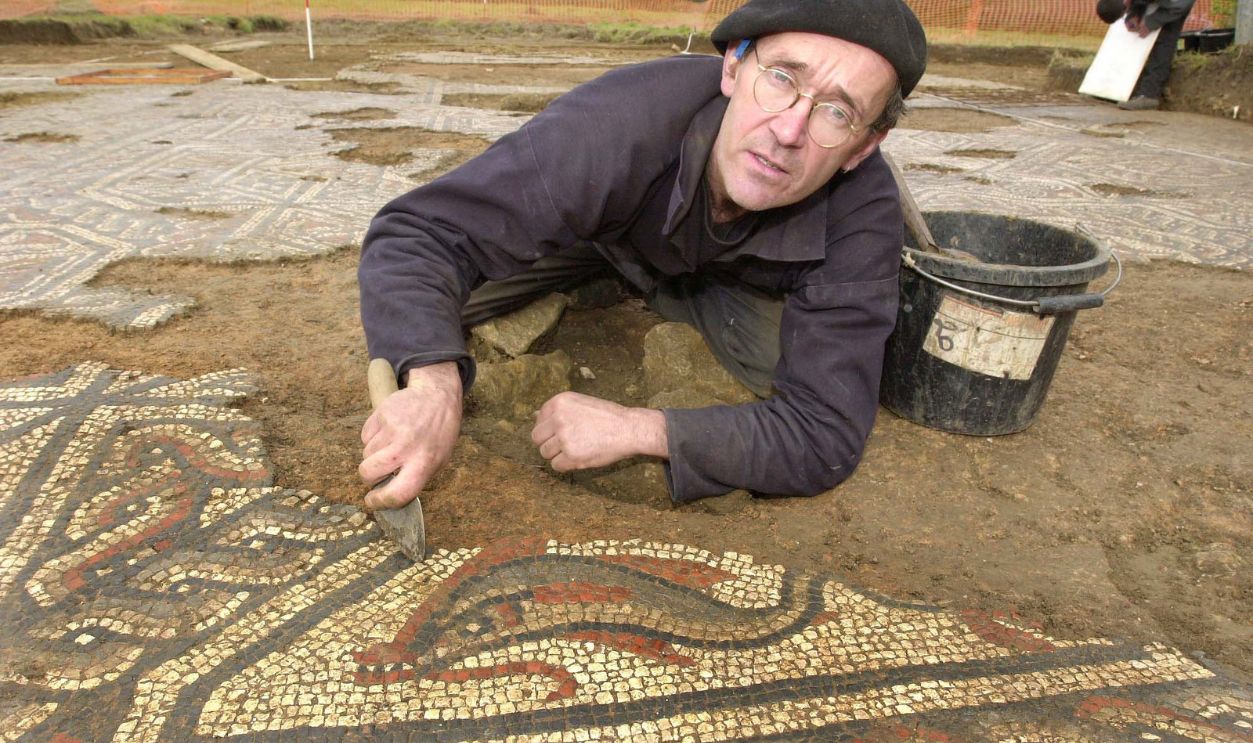 Barry Batchelor - PA Images, Getty Images
Barry Batchelor - PA Images, Getty Images
Magerius Mosaic
In 1966, a unique mosaic was discovered in a Tunisian village, at the site of a Roman villa that was owned by a man named Magerius. The mosaic depicts men hunting leopards, which was likely part of an amphitheatre spectacle. It's noteworthy because it features a steward holding moneybags on a tray and appears to show how much was paid for the animals used in the spectacles.
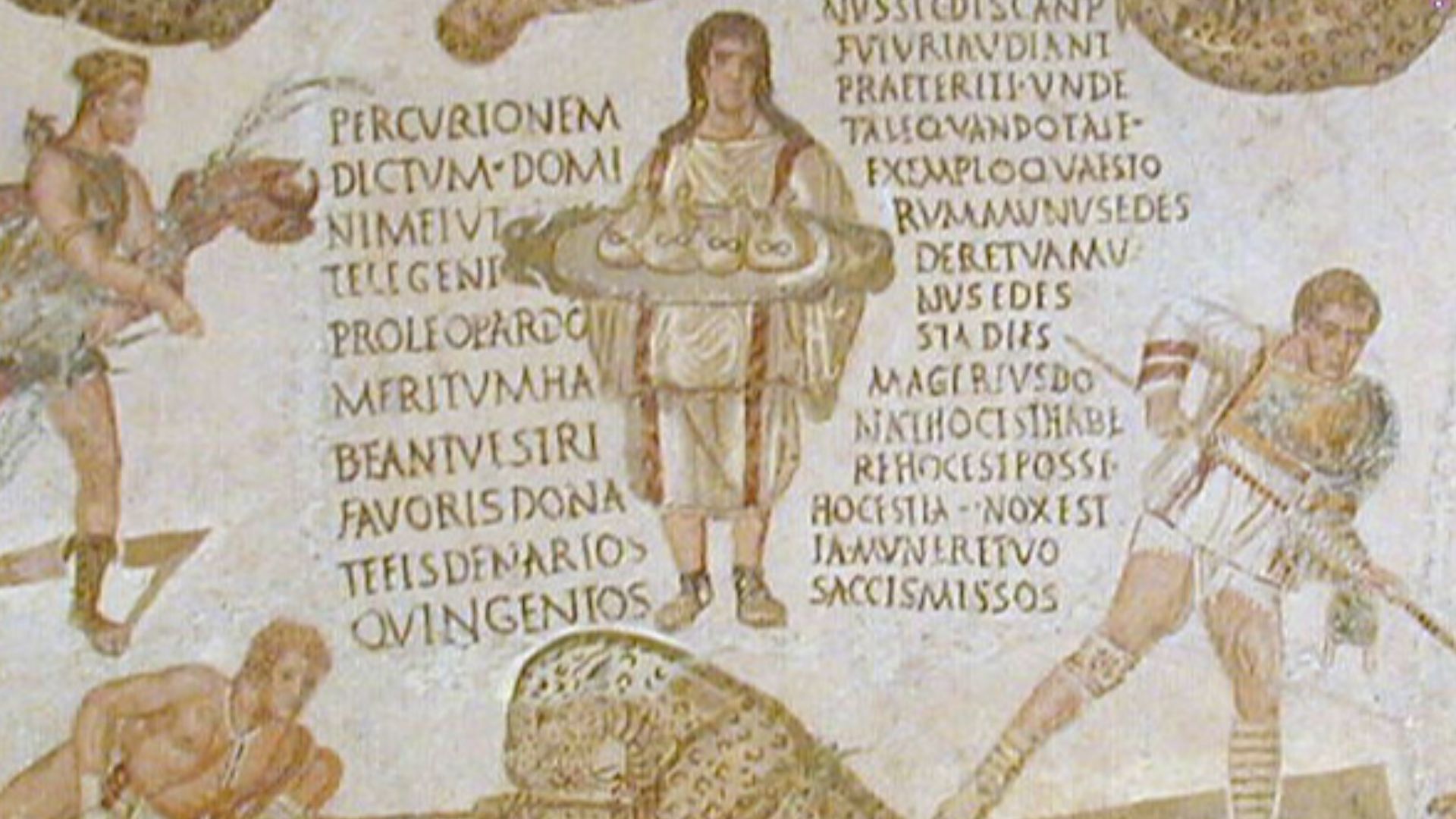 Pascal Radigue, Wikimedia Commons
Pascal Radigue, Wikimedia Commons
Megalopsychia Hunt Of Antioch Mosaics
Over 300 Roman floor mosaics were discovered in the Antioch area of modern-day Turkey in the 1930s. Two, known as the Megalopsychia Hunt of Antioch mosaics, are noteworthy for their allegorical references. The border on the larger piece depicts the buildings of ancient Antioch and serves as a sort of archaeological tourist map.
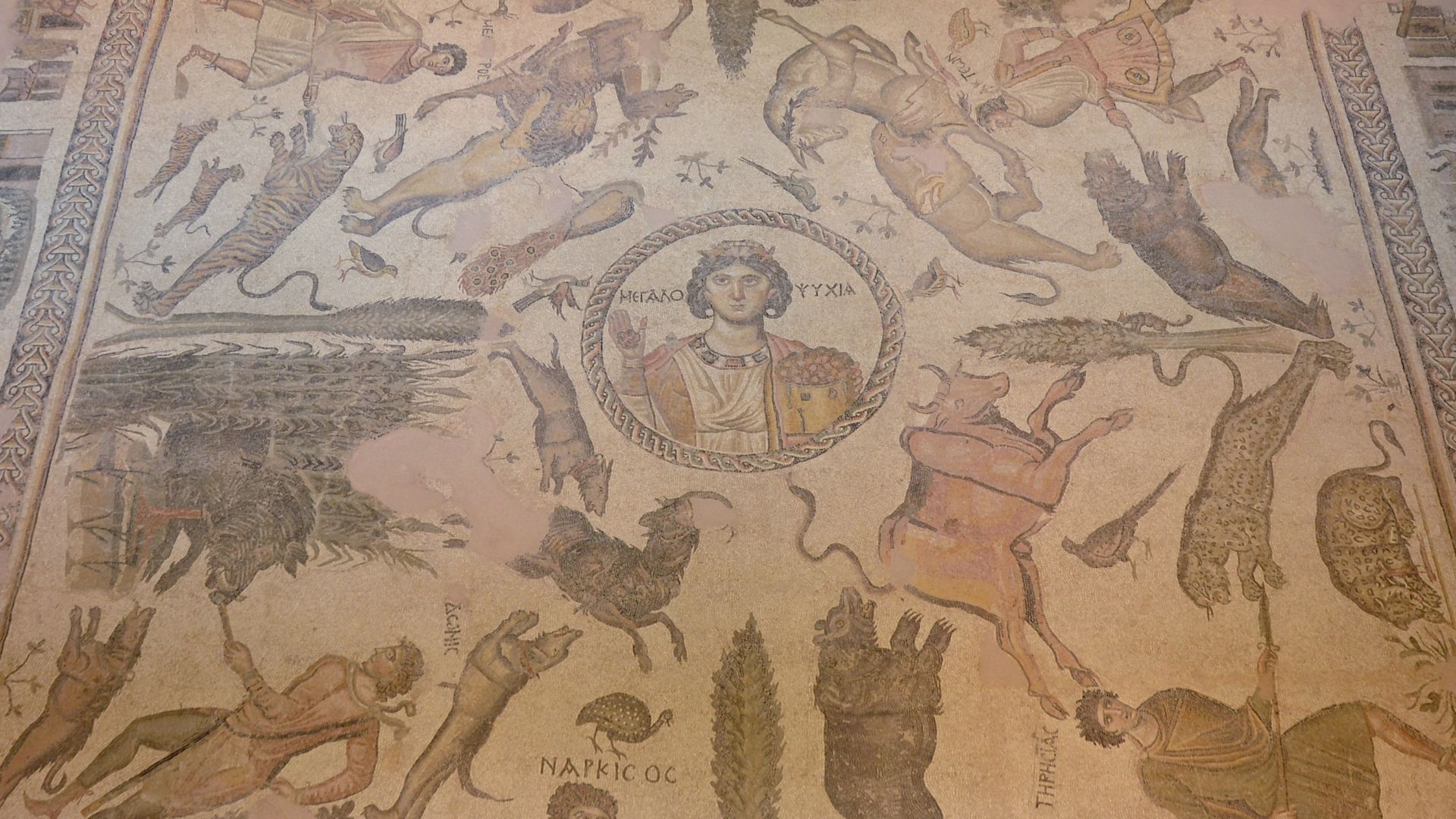 Following Hadrian, Wikimedia Commons
Following Hadrian, Wikimedia Commons
Mosaic Of Dominus Julius
The mosaic of Dominus Julius is dated to the late 4th or early 5th century CE. The artwork is meant to depict the status and wealth of the owner, Dominus Julius. It features his large home in the center, surrounded by images of people engaging in leisurely activities.
Mosaic Of The Horses
The Mosaic of the Horses, discovered in 1960, is a large floor mosaic created in a checkerboard pattern. The mosaic's small square panels depict figures of people and animals—especially horses—interspersed with geometric compositions. It can be viewed at the archaeological park of the Roman villas in Tunisia.
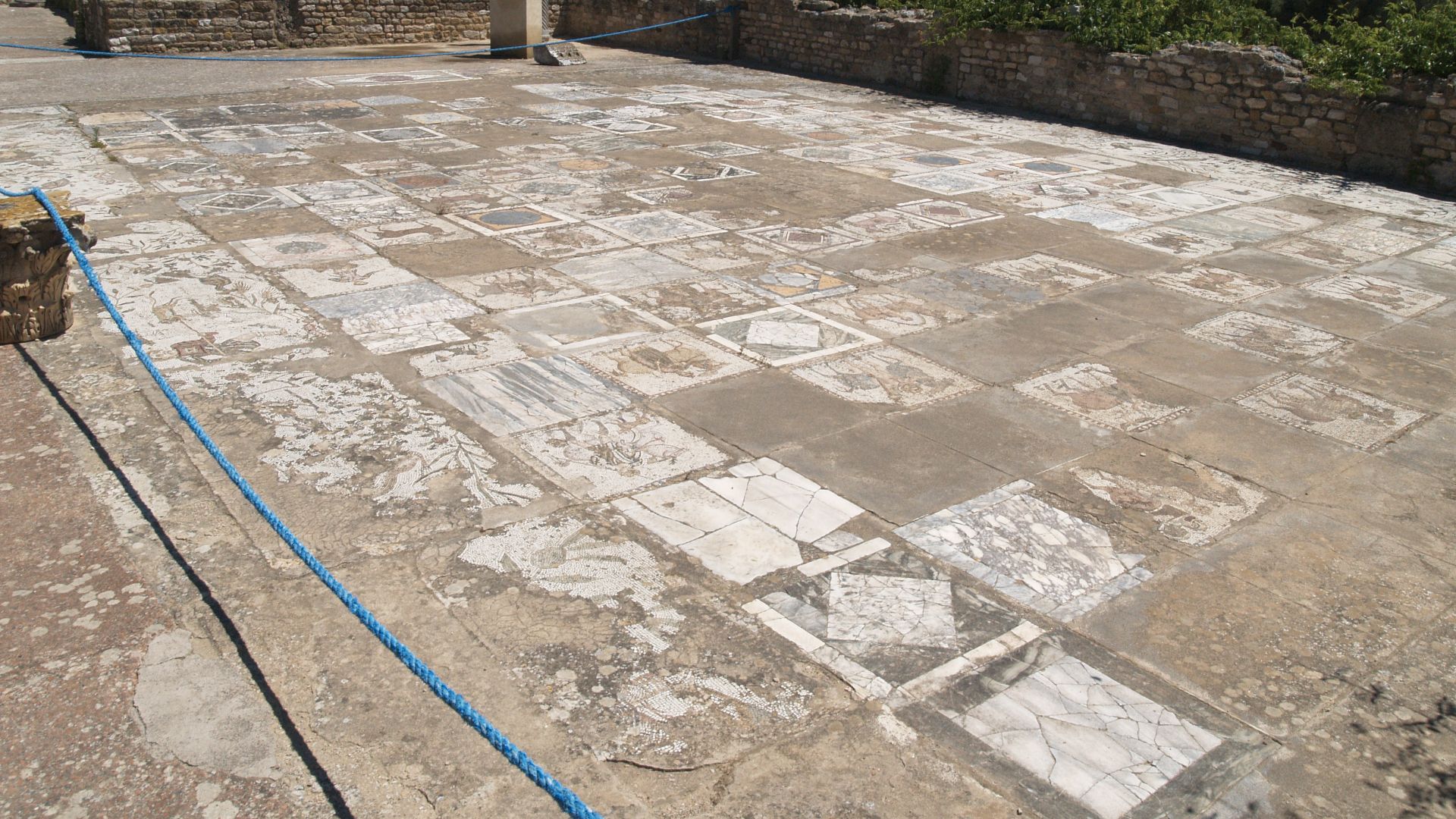 Institute for the Study of the Ancient World, Wikimedia Commons
Institute for the Study of the Ancient World, Wikimedia Commons
Museum Of Mosaics in Devnya
Beginning in 1976, excavations were carried out in Devnya, Bulgaria, to uncover a ruined Roman villa, which was built in the late 3rd or early 4th century CE. The Museum of Mosaics was built over the villa to preserve its intricate floor mosaics and other archaeological discoveries at the site.
 Vassia Atanassova - Spiritia, Wikimedia Commons
Vassia Atanassova - Spiritia, Wikimedia Commons
Neptune Triumph And The House Of Sorothus Mosaic
In 1886-1887, soldiers discovered the House of Sorothus while digging a sump in a garden in Tunisia. The site remains only partially excavated; the Neptune Triumph mosaic is one of several mosaics uncovered. Its size and well-preserved state make it noteworthy. It is currently held at the Bardo National Museum in Algiers, Algeria.
Nile Mosaic Of Palestrina
The Nile Mosaic of Palestrina was likely created in the 1st century CE. This stunning and highly detailed piece is arched at the top, which identifies it as the flooring in the apse of a grotto. It depicts scenes along the River Nile, from the Blue Nile to the Mediterranean Sea. It is on display in the Palazzo Barberini in Palestrina, Italy.
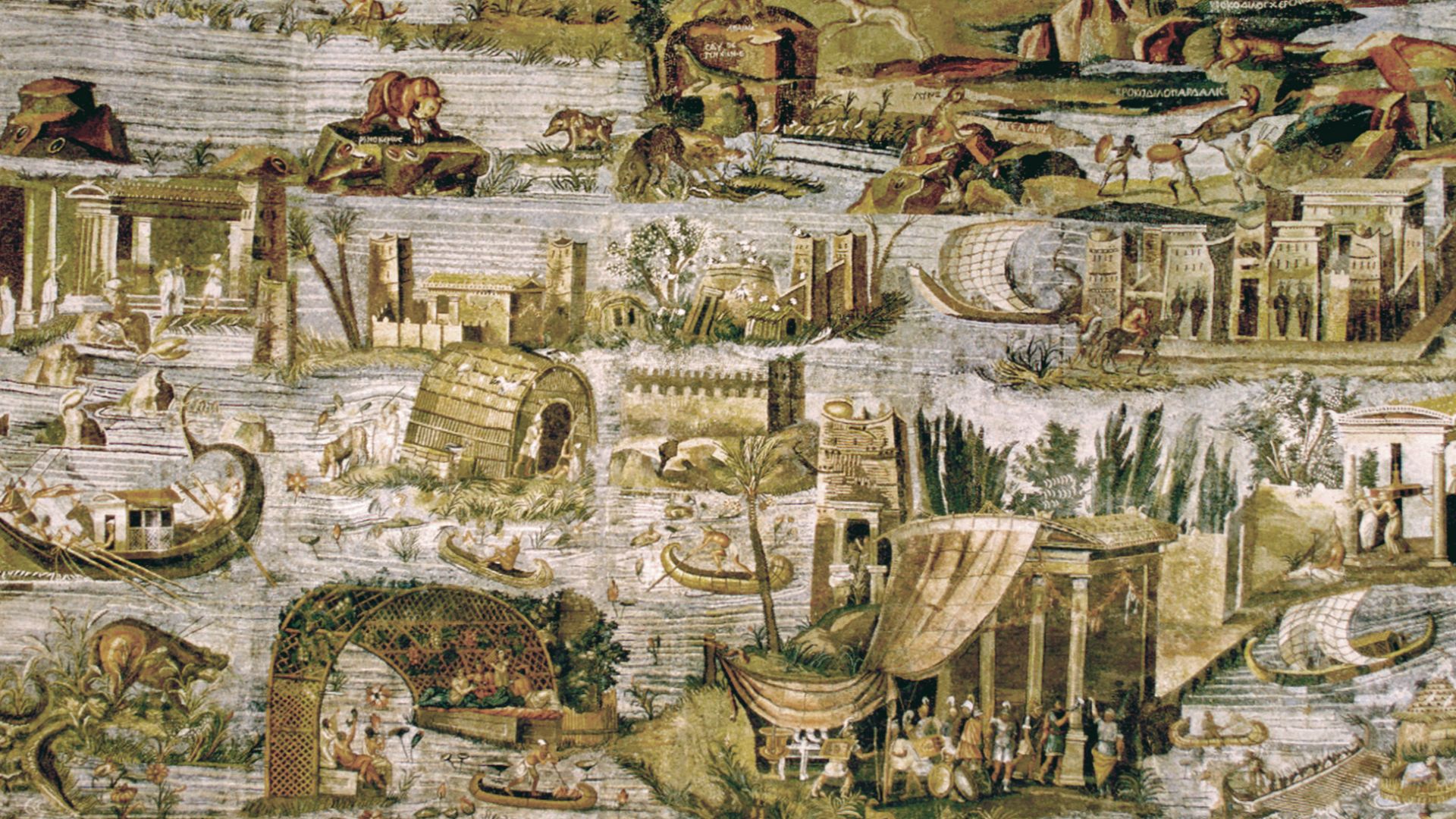 Unknown authorUnknown author, Wikimedia Commons
Unknown authorUnknown author, Wikimedia Commons
Orpheus Mosaic At Woodchester Roman Villa
A Roman villa in Gloucestershire, England, occupied from the 2nd to 4th centuries CE, is the site of one of the most impressive Roman Orpheus mosaics found to date. Unfortunately, although this mosaic remains in situ, it was covered in 1973 since the village had difficulty managing the tourists flocking to the site. There are no plans to uncover it.
Orpheus Mosaic At Littlecote Roman Villa
The Orpheus mosaic at Littlecote Roman Villa in Hungerford, England, is considered one of the most stunning Roman mosaics discovered in that country. The villa itself was impressive, with two thermal baths, 60 rooms, and several floor mosaics. The Orpheus mosaic is beautifully designed and laid out as a large rectangle with three semi-circular apses at one end. It can be viewed in situ at Littlecote Park.
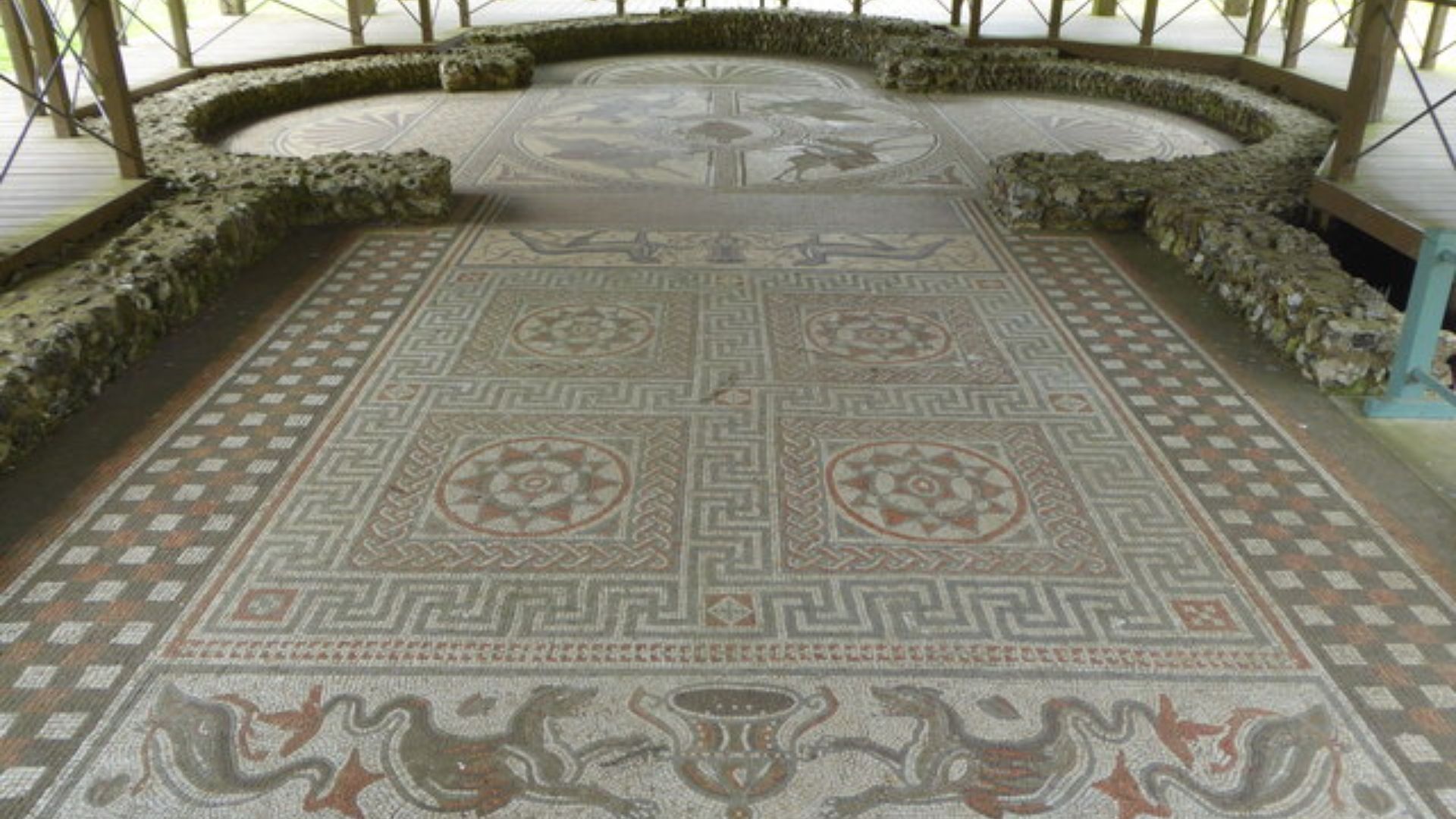 Rod Allday , Wikimedia Commons
Rod Allday , Wikimedia Commons
Plato's Academy Mosaic
The Plato's Academy mosaic is a breathtaking piece of free-standing art. It is relatively small, only 86 cm by 85 cm. It's beautifully designed with vibrant colors, depicting seven men in classical Greek garments gathered under a tree. The central figure may be Plato, surrounded by scholars, but some suggest that it's a reference to the Seven Sages of Greece.
Sidi Ghrib
Sidi Ghrib is an archaeological site in Tunisia. It is the location of a luxurious Roman villa that was constructed in the late 4th or early 5th century CE. The villa boasts an abundance of beautiful Roman mosaics and, in particular, in the thermal baths. While many remain in situ, several of the most intricate ones have been removed to museums.
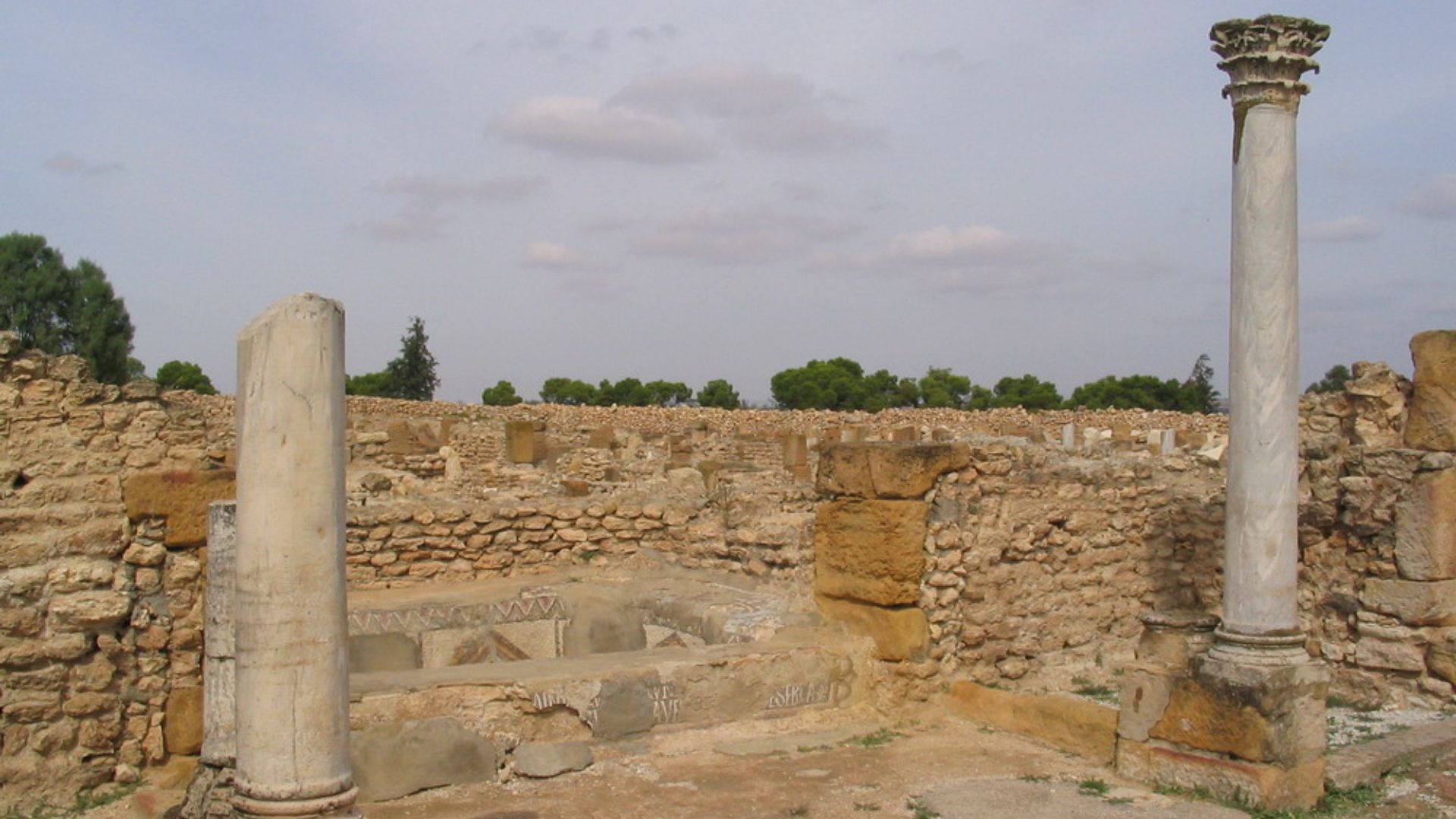 Astiosaurus, Wikimedia Commons
Astiosaurus, Wikimedia Commons
The Woman Of Sidi Ghrib At Her Toilet Mosaic
Originally installed in the baths of Sidi Ghrib, the Woman of Sidi Ghrib at her Toilet mosaic now resides in the Bardo Museum in Tunisia. The intricate mosaic depicts the mistress of the villa, surrounded by items needed for a bath, as well as two servants offering her a mirror and a basket of jewels.
 Carole Raddato from FRANKFURT, Germany, Wikimedia Commons
Carole Raddato from FRANKFURT, Germany, Wikimedia Commons
Rose Garden Mosaic
Discovered at the ancient Roman villa Sidi Ghrib in Tunisia, the rose garden mosaic is a stunning pastel depiction of a woman pouring roses from a basket held over her head. This figure is a common allegory for Spring, but the Sidi Ghrib mosaic is notable for the woman's loosely draped clothing, which exposes her body. Although suitable for the baths (where it was installed), it wasn't usual to display art of this nature at the time.
Mosaic Of Tirana
The Mosaic of Tirana is a large floor mosaic that was uncovered in Tirana, Albania. Unfortunately, it's not well preserved, but the surviving sections show vivid red and ecru geometric patterns as well as poultry and fish. Originally part of a 3rd-century CE Roman house, it remains in situ.
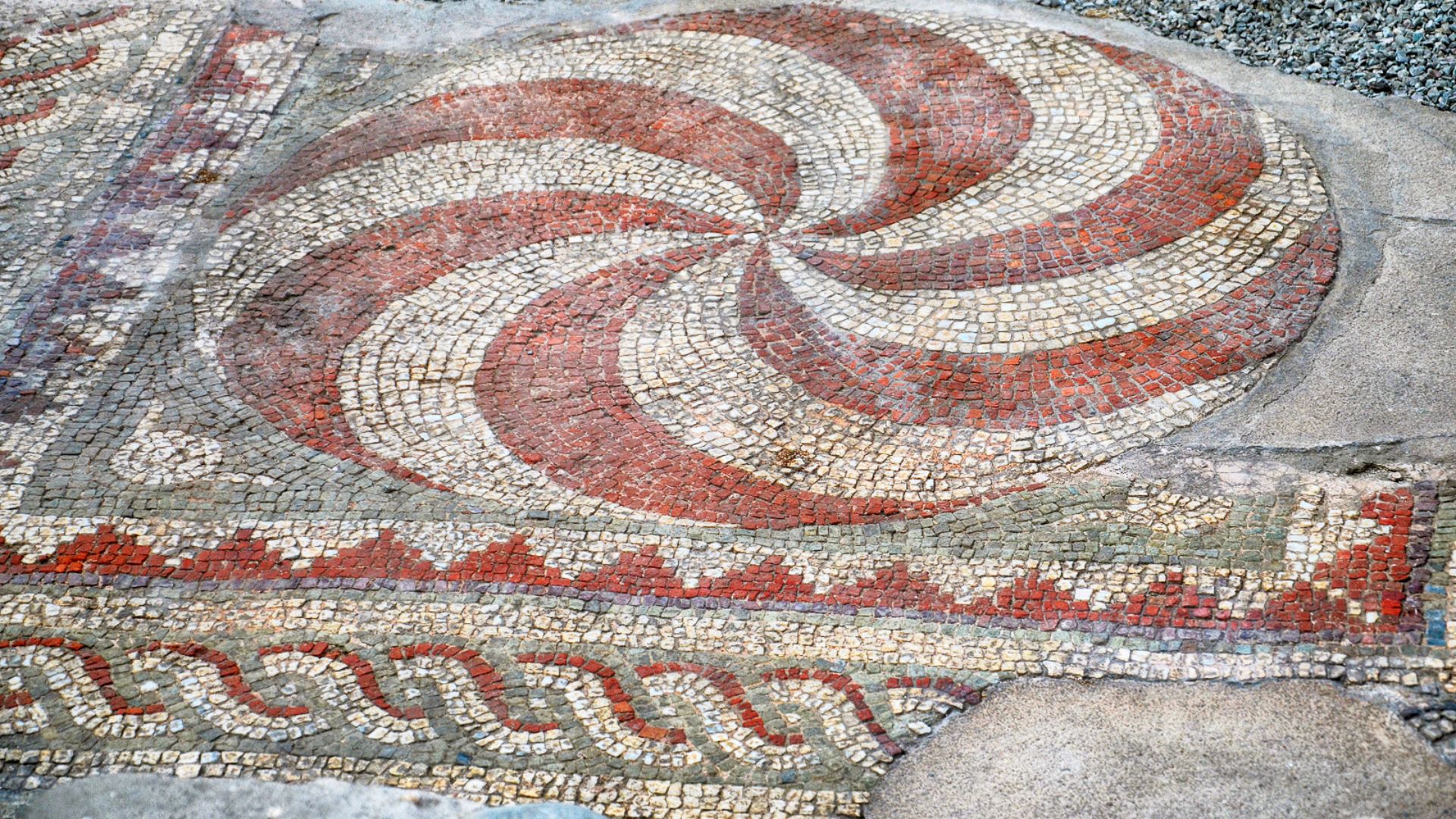 Pasztilla aka Attila Terbócs, Wikimedia Commons
Pasztilla aka Attila Terbócs, Wikimedia Commons
Tomb Of The Julii
During the 1940s, Pope Pius XI had the catacombs beneath Saint Peter's Basilica in Vatican City excavated. This work revealed a tomb known as Mausoleum M, or the Tomb of the Julii. The tomb is noteworthy for its mosaic work, which includes a central mosaic that appears to be an early depiction of Jesus Christ.
Villa Armira
Owned by aristocrats, the Villa Amira, built in the 1st century CE, features lavish marble fittings, a large bath, and stunning floor mosaics, most of which depict animals, plants, and geographic shapes. The excavated villa is one of the most-visited archaeological sites in Bulgaria.
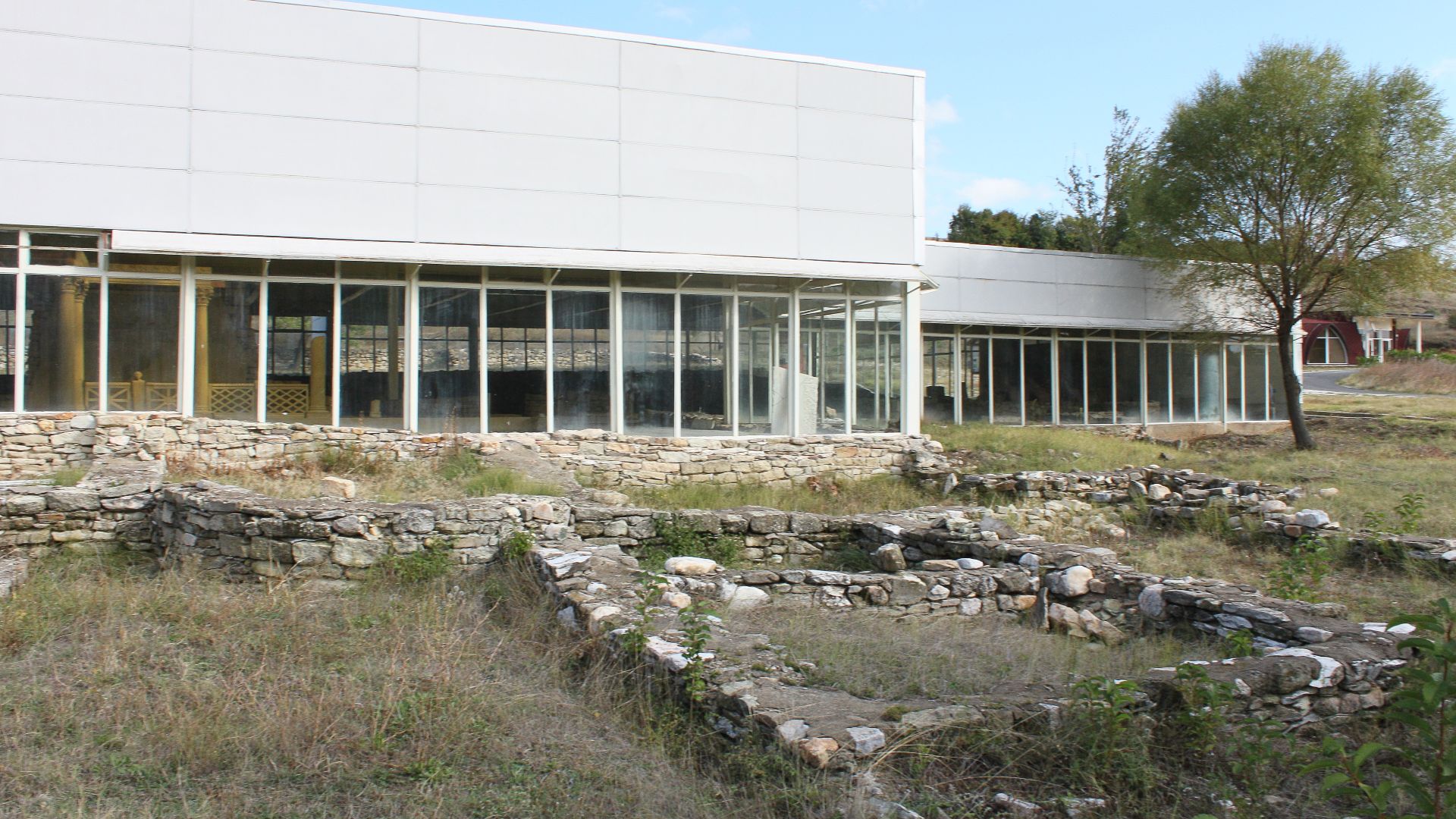 Bin im Garten, Wikimedia Commons
Bin im Garten, Wikimedia Commons
Portrait Mosaic At Villa Amira
While Villa Amira in Bulgaria has several stunning floor mosaics, one has special significance. The floor mosaic in the master bedroom features a portrait of the 2nd-century CE owner, flanked by portraits of his son and daughter. Portrait mosaics of "real people" from that era are rare.
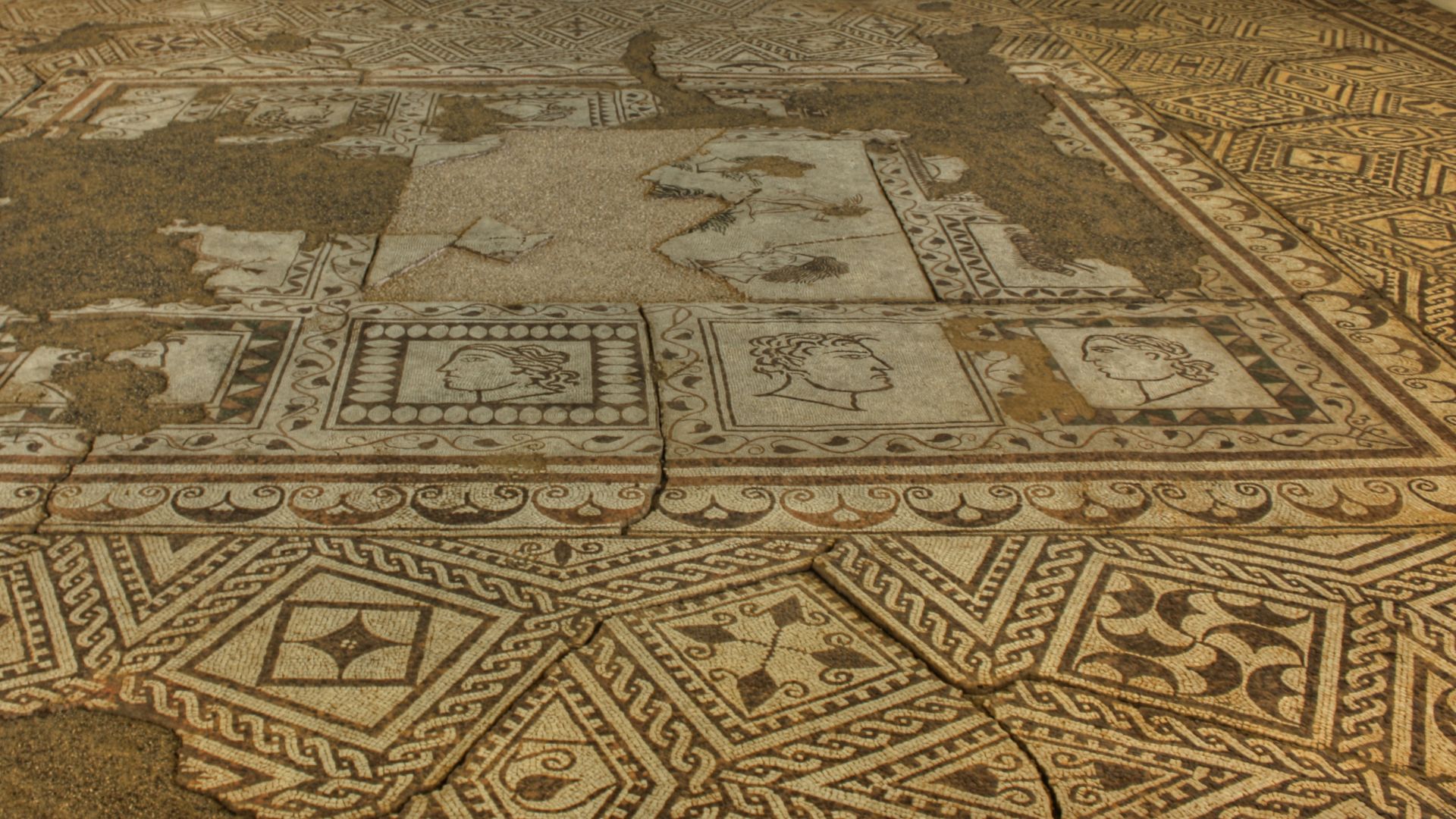 Klearchos Kapoutsis from Paleo Faliro, Athens, Greece., Wikimedia Commons
Klearchos Kapoutsis from Paleo Faliro, Athens, Greece., Wikimedia Commons
Villa Romana Del Casale
The Villa Romana del Casale is a 4th-century Roman villa in Sicily designated as a UNESCO World Heritage Site. The villa features one of the largest and most sumptuous collections of mosaics in the world. Over 3,500 square meters of mosaic artwork has survived, largely thanks to a 12th-century landslide that covered and preserved the villa.
Villa Romana Del Tellaro
The Villa Romana del Tellaro was discovered in Sicily in 1971 and underwent extensive excavations until 2008, when it was opened to the public. Large and lavish, the villa likely featured many exquisite mosaics but only four have survived. They are highly detailed, created with tiny tiles. The largest mosaic features scenes depicting hunting and dining.
Villa Romana Di Patti
The Villa Romana di Patti is a large, lavish villa from the 4th century CE located in Sicily. Although parts of the villa did not survive, the mosaic floors in the peristyle and tri-apsidal room remain in excellent condition. The colorful mosaics feature flora and ornamental motifs in the peristyle and animals within medallions in the tri-apse.
Mosaic Of Virgil
Part of a larger mosaic discovered in Tunisia, the Mosaic of Virgil is the earliest known portrait of Virgil. The poet is shown as seated, wearing a toga and holding a parchment on which an excerpt of the Aeneid is printed. The mosaic is held at the Bardo National Museum in Tunisia.
Zliten Mosaic
Discovered in Libya in 1913, the 2nd-century CE Zliten mosaic has a checkerboard-style center. The alternating squares have center medallions depicting images of fish and marine creatures. The squares are surrounded by a highly-detailed border that features gladiator, hunting, and entertainment scenes.
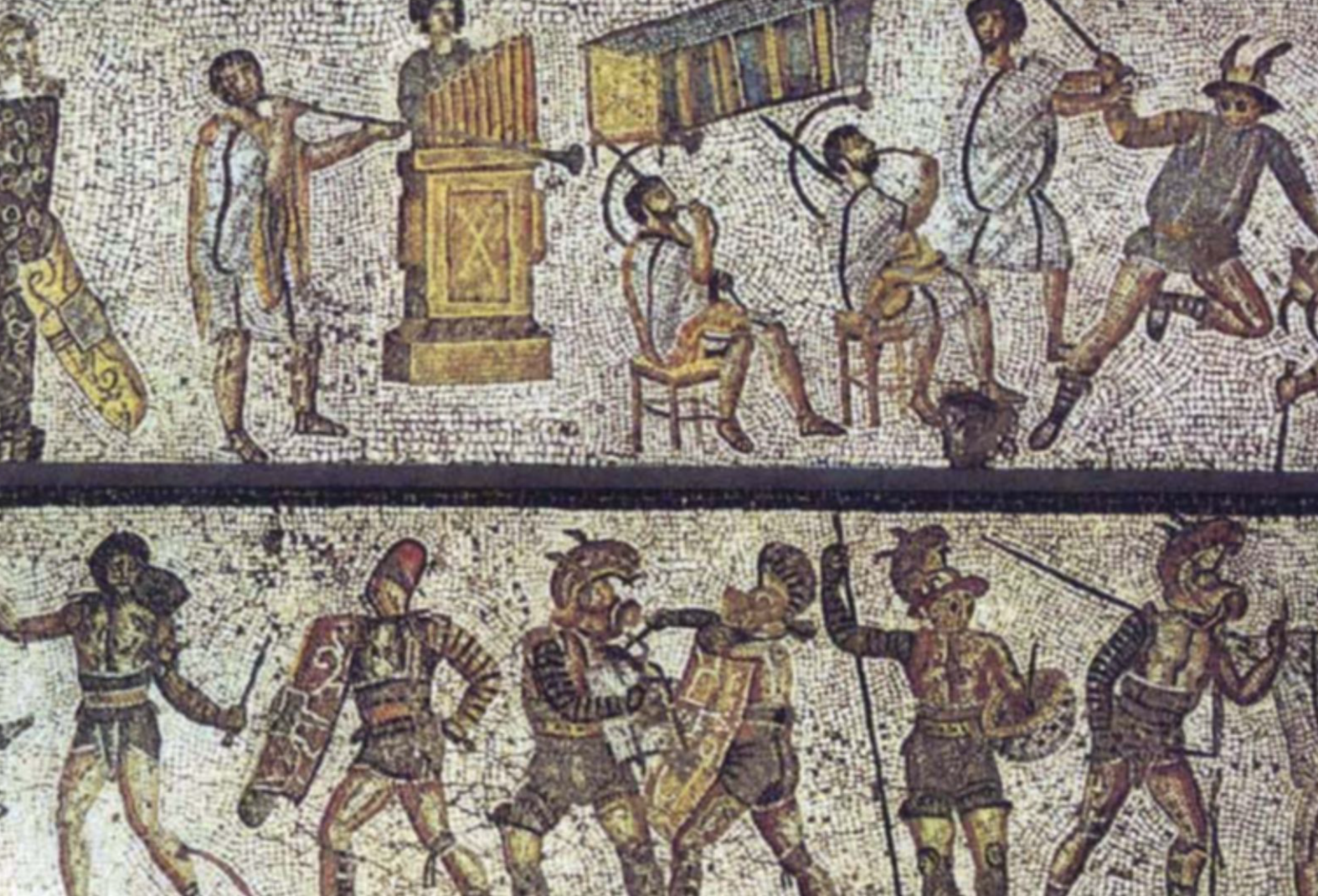 Unknown authorUnknown author, Wikimedia Commons
Unknown authorUnknown author, Wikimedia Commons
Gypsy Girl Mosaic
The Gypsy Girl Mosaic, stunning in its realism and use of color, is dated to the 3rd century CE. Only a fragment of the mosaic remains, but it's beautiful, showing the upper part of a young woman's face, including her enigmatic eyes, a gold earring, and chestnut hair covered by a scarf. It's held at the Zeugma Mosaic Museum in Turkey and is often used as a symbol of the museum or Turkey itself.
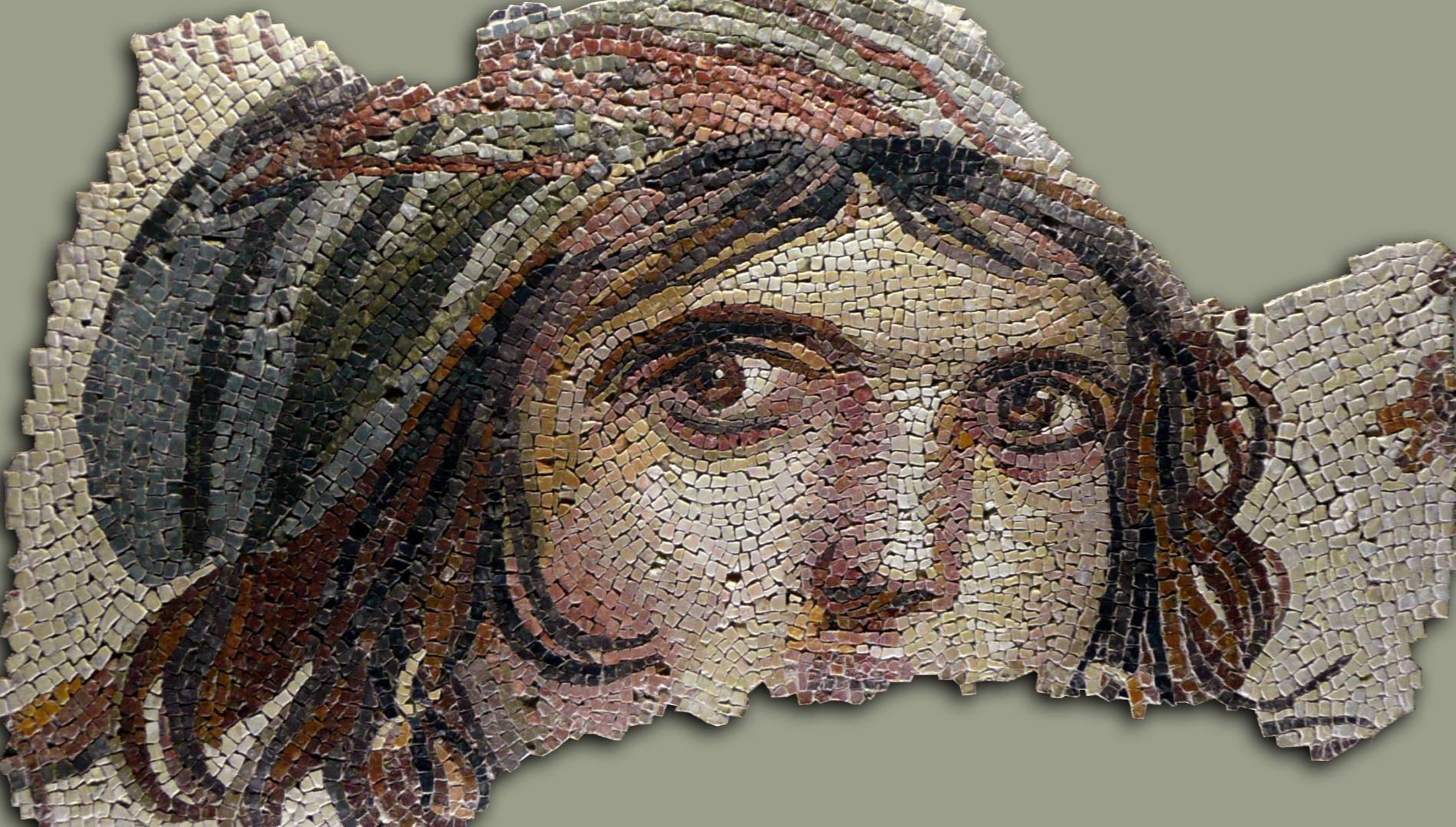 Made form the original imageof Nevit Dilmen (talk) by Manco Capac, Wikimedia Commons
Made form the original imageof Nevit Dilmen (talk) by Manco Capac, Wikimedia Commons
Basilica Of Santa Maria Maggiore
The Basilica of Santa Maria Maggiore, located in Rome, was built in the 5th century CE. It was adorned with 42 breathtaking mosaic panels, placed high up on the walls of the central nave. Unfortunately, some have been extensively damaged or deliberately removed, and only 27 remain. The color and detail of these panels, which depict biblical scenes, are extraordinary.
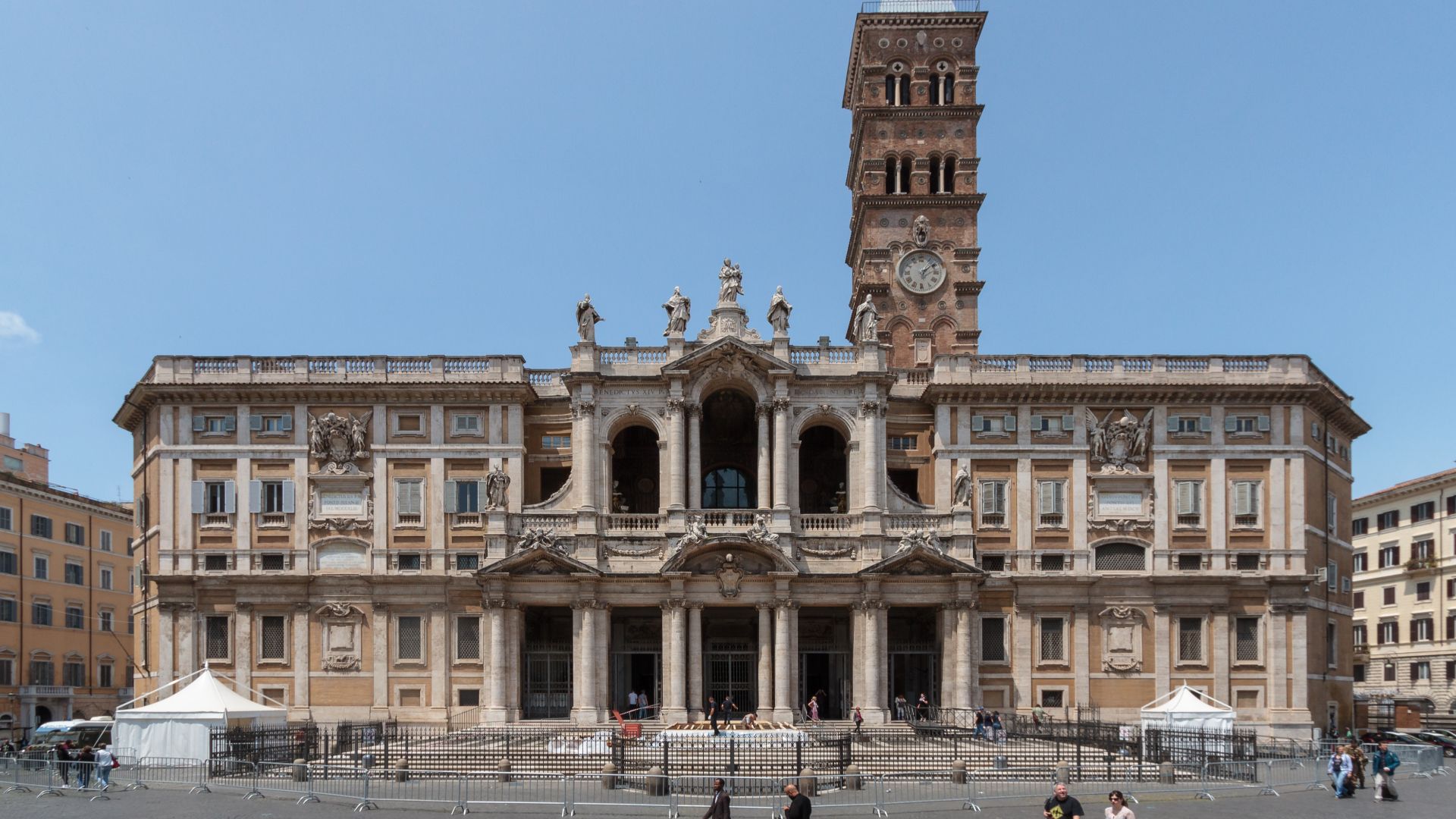 Pierre-Selim Huard, Wikimedia Commons
Pierre-Selim Huard, Wikimedia Commons
Beware Of Dog Mosaic
Featured in a 2nd-century CE house in Pompeii, the Beware of Dog Mosaic may be history's first "Beware of the Dog" sign. The black-and-white floor mosaic features a large dog in a typical dog "play" pose, with the words "Cave Canem" underneath, which translates to "Beware Dog".
The Baths Of Caracalla
The Baths of Caracalla, built in the 3rd century CE, were the second-largest public baths in Rome. The baths were lavish and included a public library as well as opulent artworks such as imposing marble statues and highly-detailed floor mosaics. Some of those mosaics remain in situ, but a particularly impressive one—featuring portraits of athletes—has been moved to the Vatican Museums.
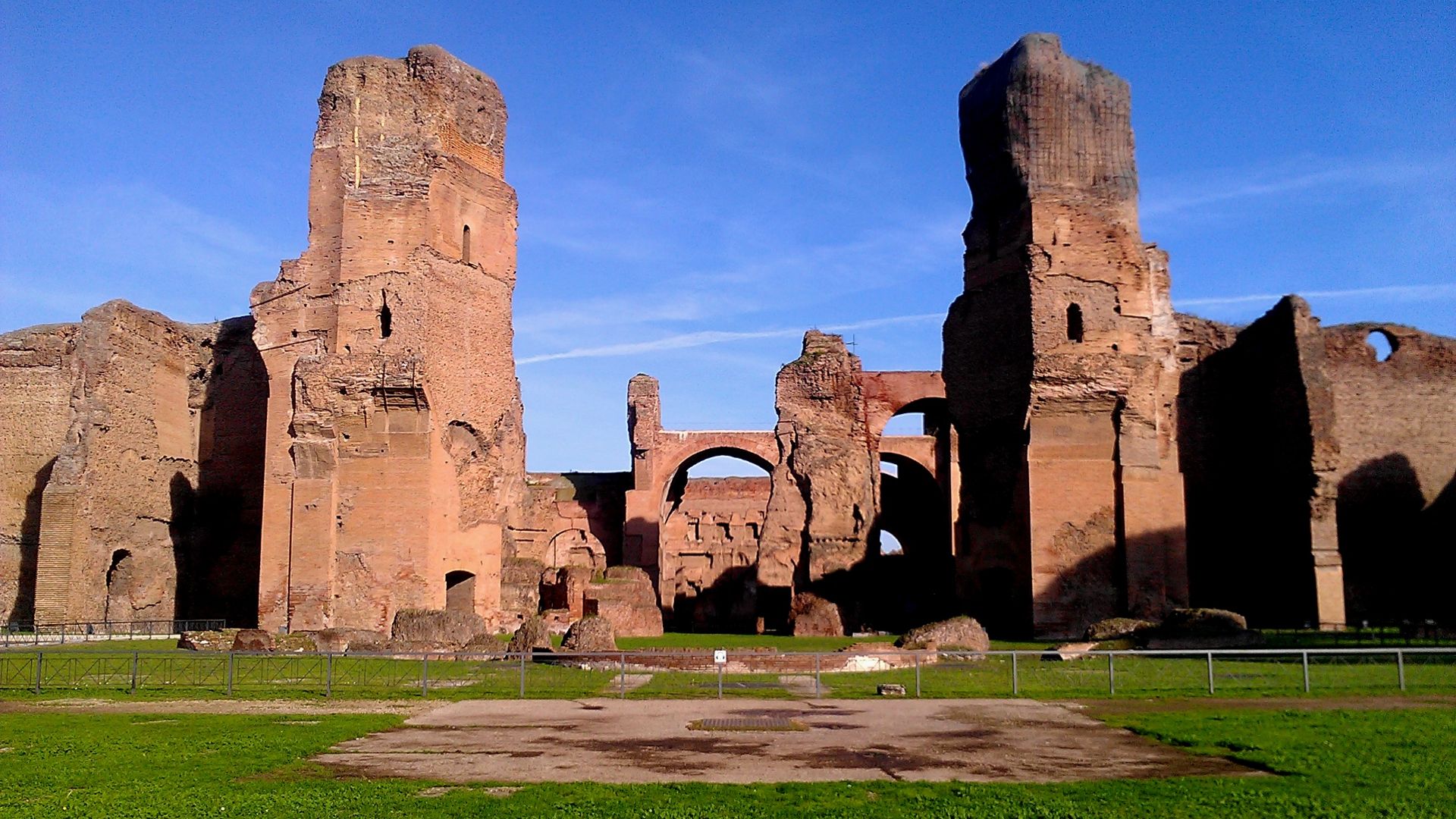 Ethan Doyle White, Wikimedia Commons
Ethan Doyle White, Wikimedia Commons
Hinton St Mary Mosaic
It's believed that the Hinton St Mary mosaic features the oldest depiction of Jesus Christ in the Roman Empire. First discovered at Hinton St Mary, Dorset, England in 1963, historians were shocked when the found a second panel of the mosaic in 2022. The larger first panel features a portrait of a man in its centre, believed to be Christ, while the smaller panel depicts a scene from Roman mythology, Bellerophon slaying the Chimera. Although the full mosaic was recovered, only the center portrait is on display at the British Museum.
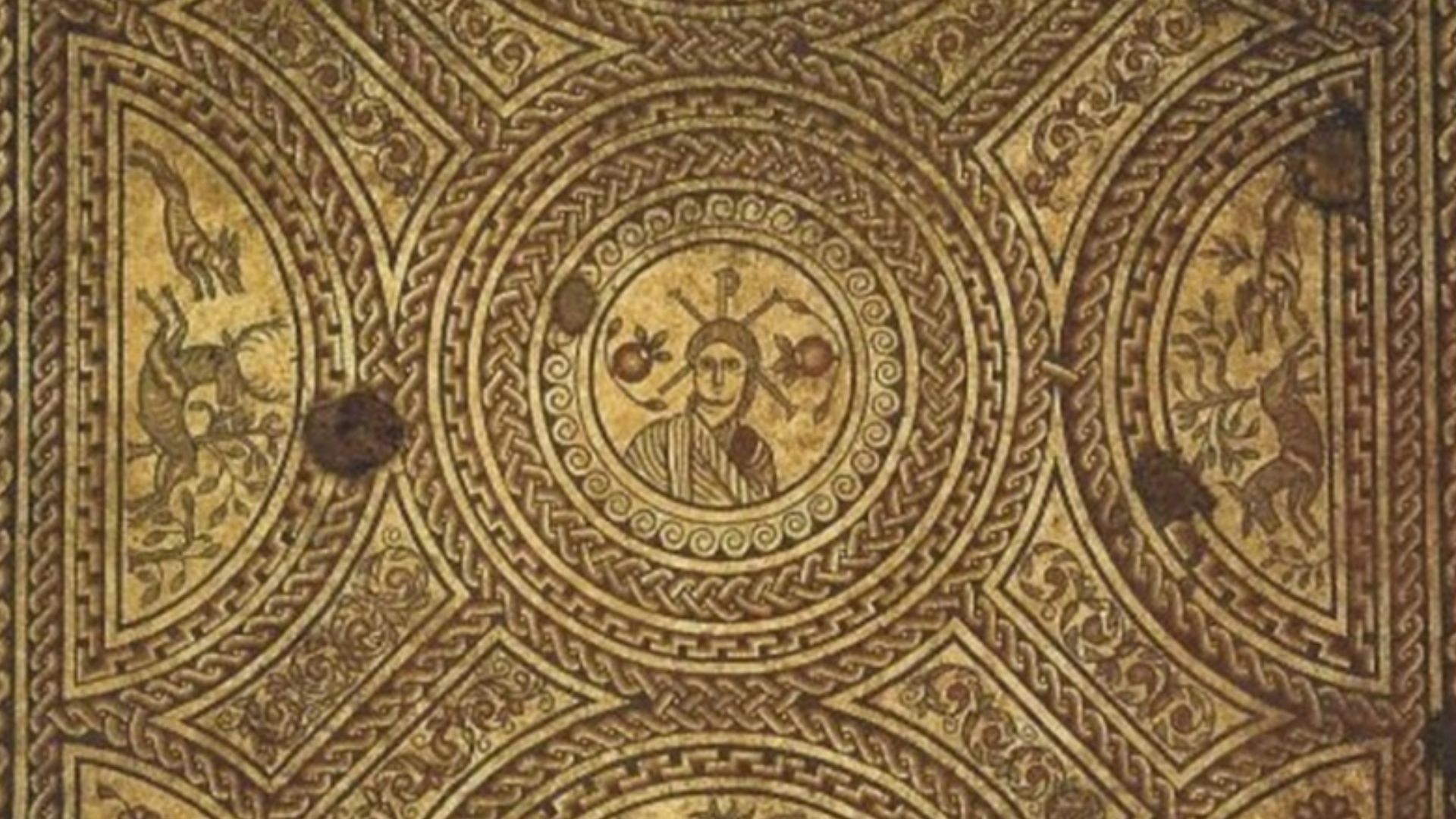 User:Fransars, Wikimedia Commons
User:Fransars, Wikimedia Commons
You May Also Like:
Turkey's Remarkable Ancient Roman Ruins
The Famous Alexander The Great Mosaic Has Finally Been Analyzed For The First Time
A Work Crew In France Have Uncovered An Ancient Roman Villa
Source: 1



